Long said to be the AirPods Pro 2, the Soundcore Liberty 4 now bring a heart rate sensor for the ear that delivers surprisingly good readings. The other extras are also lavish with LDAC, multipoint, wearer detection and wireless charging. When it comes to the sound, however, Soundcore turns the tuning control a little too much.
Table of contents
- Technical data and functions of the Liberty 4
- Two drivers, spatial audio and heart rate measurement via ear
- LDAC and Multipoint
- Slide charging case
- Up to 28 hours of battery life
< /li>
- Protected against sweat and splash water
- Controls with automatic pause
- Customize the controls in the app
- Hassle-free single use
- Extensive Soundcore app
- Very comfortable fit
- The sound of the Soundcore Liberty 4
- Analysis of the frequency response
- Good transparency mode
- Heavily filtered telephony
- Latency of the Liberty 4
- Conclusion
< li>ANC of the Liberty 4
With the Soundcore Liberty 4, Anker brings LDAC in-ears with heart rate measurement and dual drivers. What has been said about the Apple AirPods Pro for years now anchors the Soundcore series. So the company not only promises a very good sound, such as that offered by the Liberty 3 Pro (test), but also good value for money in addition to the novelty. Because the suggested retail price of the Soundcore Liberty 4, which is available in black or white, is 150 euros, so it's in the middle price range.
In addition to the earphones, buyers also get a charging case , four different sized earbuds, a USB-A to USB-C charging cable and a quick start guide.

Image 1 of 2
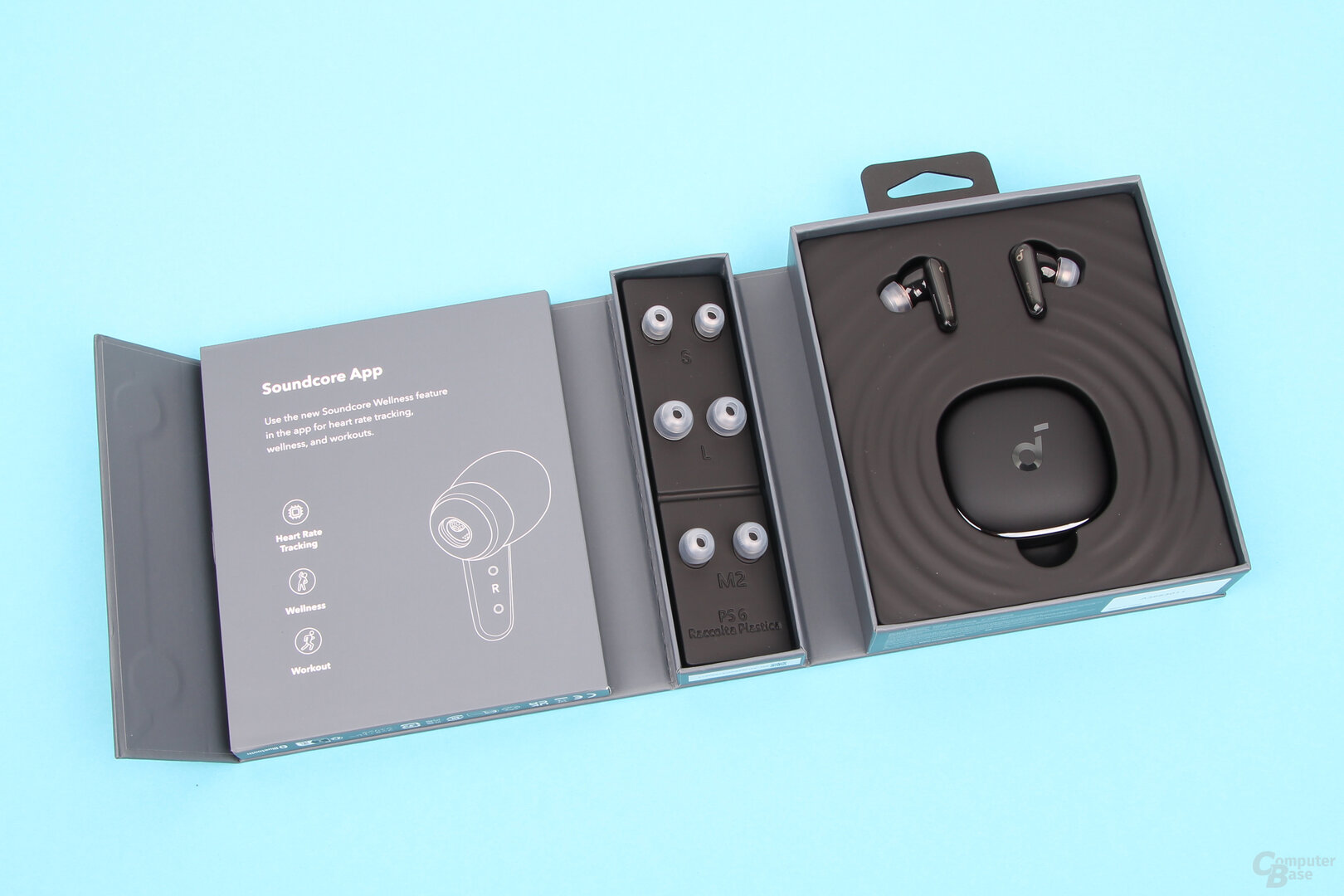 Scope of delivery of the Anker Soundcore Liberty 4
Scope of delivery of the Anker Soundcore Liberty 4Technical data and functions of the Liberty 4
Two drivers, Spatial audio and heart rate monitoring by ear
Like the Liberty 3 Pro, the Liberty 4 rely on sound via two drivers per earphone, with Anker speaking of two dynamic drivers this time, while the Liberty 3 Pro combines a dynamic driver with a balanced armature driver. This makes the highs clearer.
The Liberty 4 offer a virtual 3D sound via head tracking. This spatial audio also works in conjunction with LDAC, but not if the individual sound adjustment via HearID Sound or an equalizer is used. The position sensor in the ear can also be used to warn you if you keep your head tilted downwards, i.e. if you have assumed a harmful posture. After calibrating to a neutral, straight position, the in-ears will then play a warning tone if your head is down for five minutes.



Heart rate sensor in the right earbud of the Soundcore Liberty 4
They also have health tracking for the first time and record the heart rate of the wearer. For this purpose, an optical heart rate sensor is installed in the ear piece of the right earphone, which continuously records the heart rate when wearing the in-ear headphones. The current heart rate and its progression over time can be called up via the Soundcore app. In addition to the minimum and maximum heart rate, the average heart rate is also displayed. In order to be able to use this function, the right earphone must therefore be worn. The measurement is also performed when no music is played. In the test, it proved to be surprisingly accurate. In everyday life, the difference to the measurement with an Apple Watch 8 is usually a maximum of 1 to 2 beats per minute, so it can be neglected. Both a low and a high heart rate are recorded well by the Liberty 4.
-
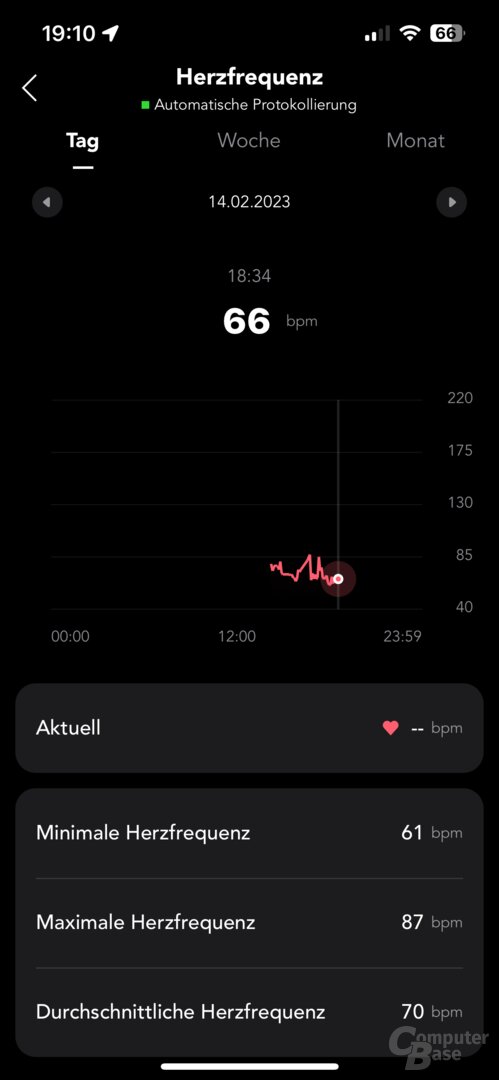 Heart rate recording in the sound core app with the Liberty 4
Heart rate recording in the sound core app with the Liberty 4
Image 1 of 17
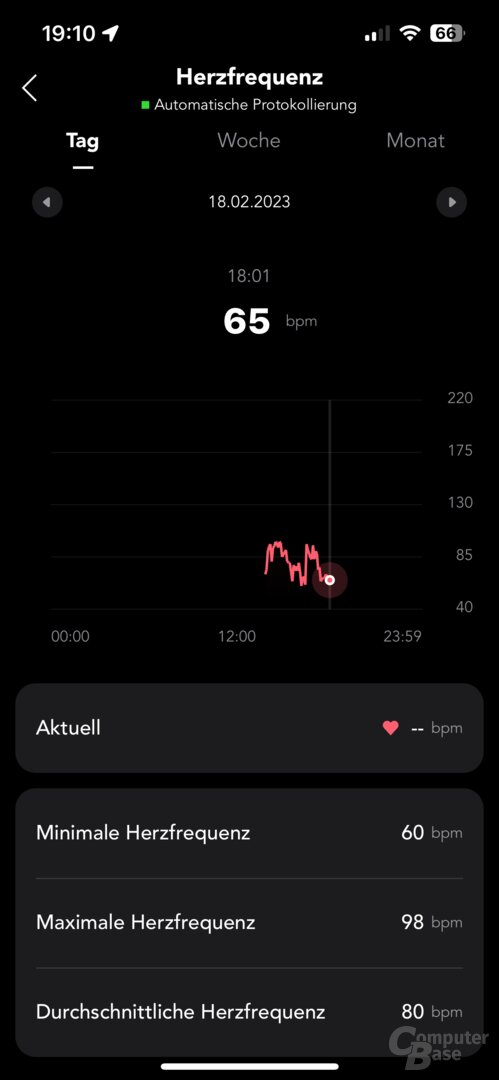 Heart rate recording in the Soundcore app with the Liberty 4
Heart rate recording in the Soundcore app with the Liberty 4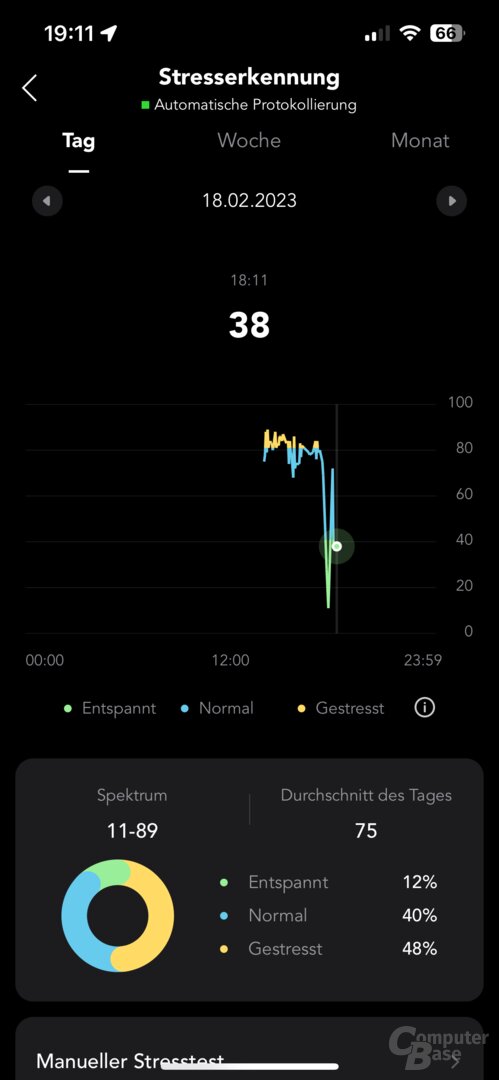 Stress recording in the Soundcore app with the Liberty 4
Stress recording in the Soundcore app with the Liberty 4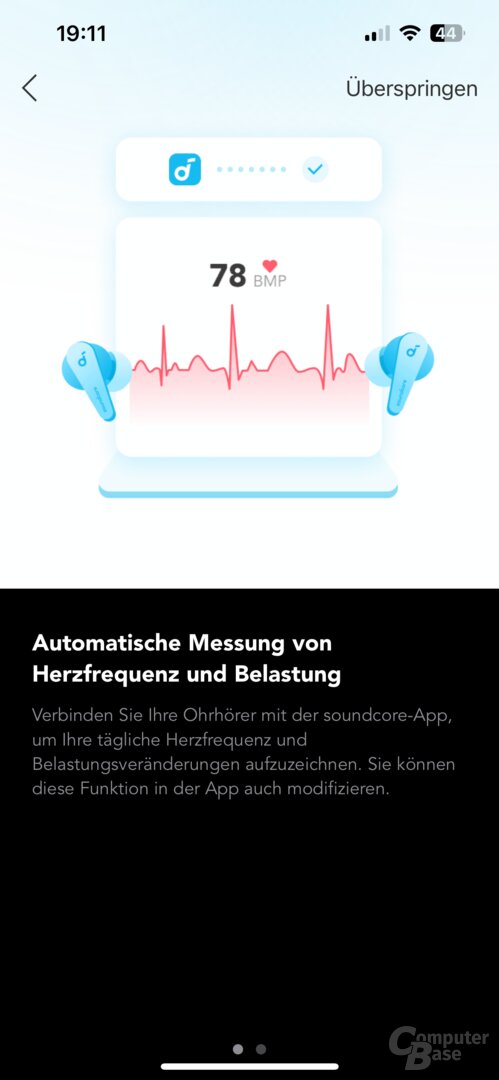 Heart rate and strain in the Soundcore app
Heart rate and strain in the Soundcore app Heart rate and strain in the Soundcore app
Heart rate and strain in the Soundcore app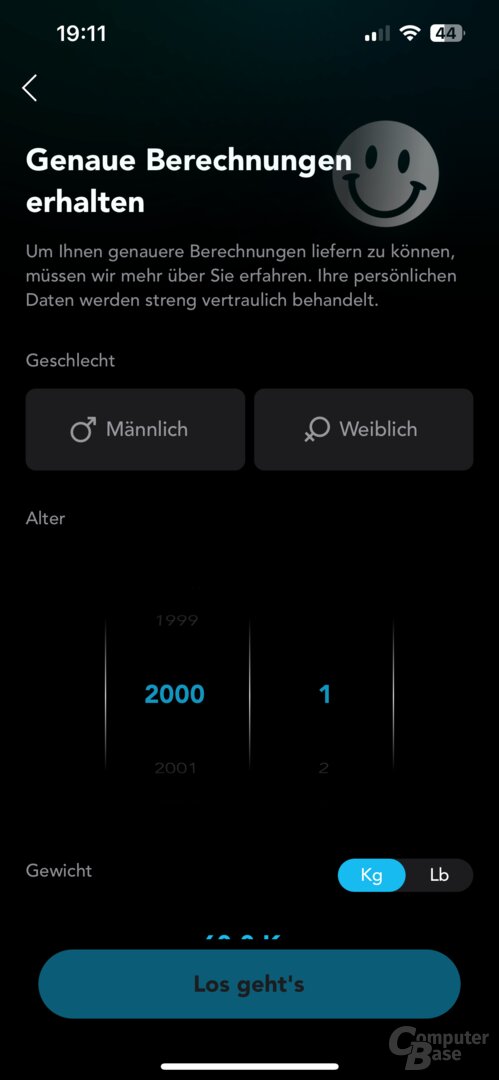 Heart rate and stress in the Soundcore app
Heart rate and stress in the Soundcore app Heart rate and stress in the Soundcore app
Heart rate and stress in the Soundcore app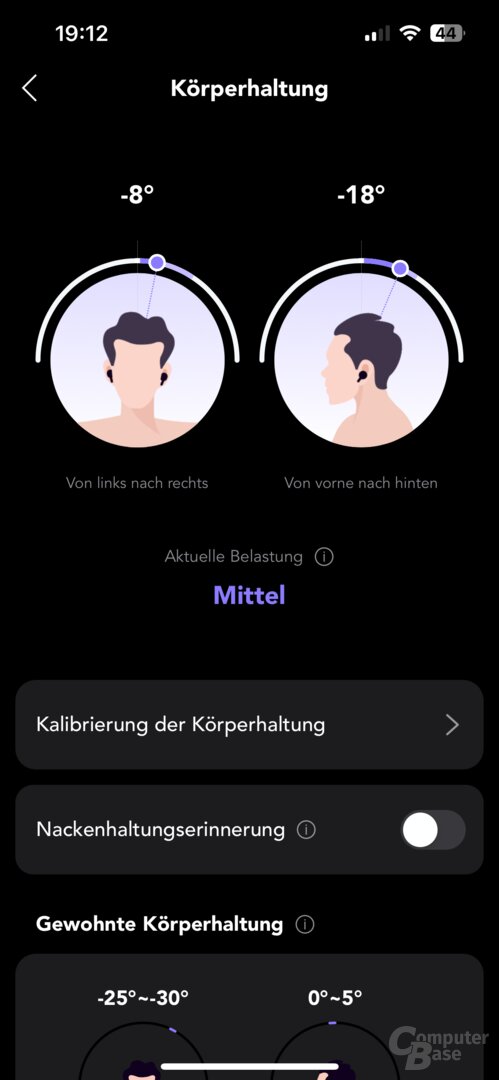 Heart rate and stress in the Soundcore app
Heart rate and stress in the Soundcore app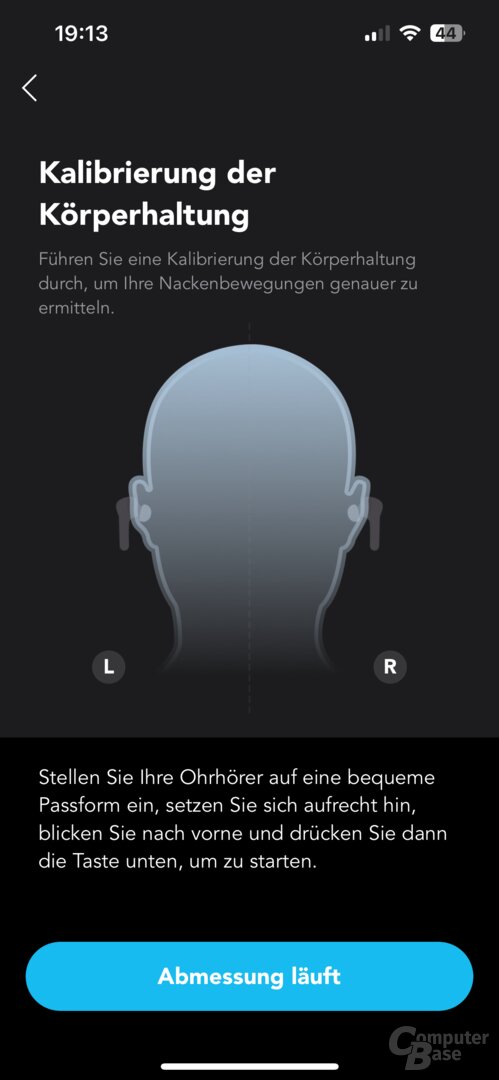 Heart rate and load in the Soundcore app
Heart rate and load in the Soundcore app Heart rate and load in the Soundcore app
Heart rate and load in the Soundcore app Heart rate and stress in the Soundcore app
Heart rate and stress in the Soundcore app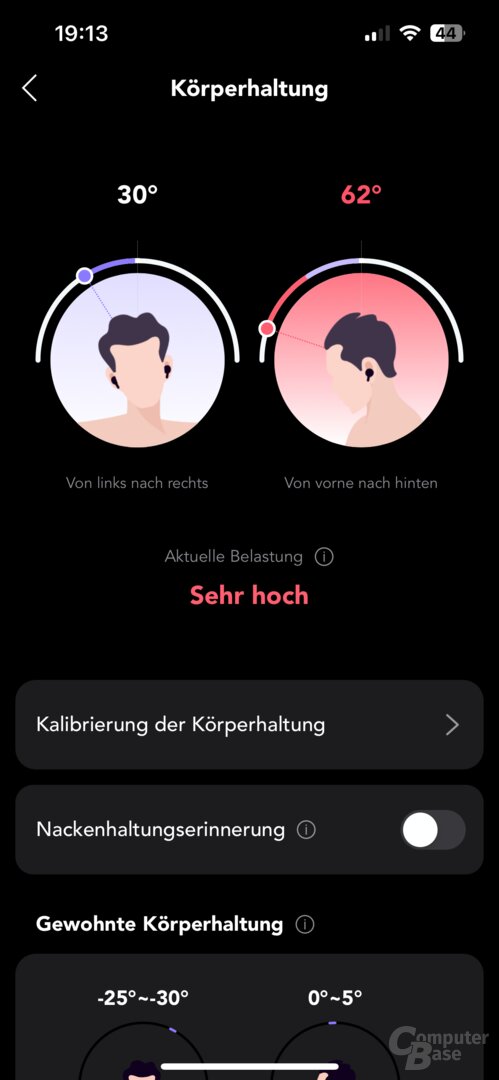 Heart rate and strain in the Soundcore app
Heart rate and strain in the Soundcore app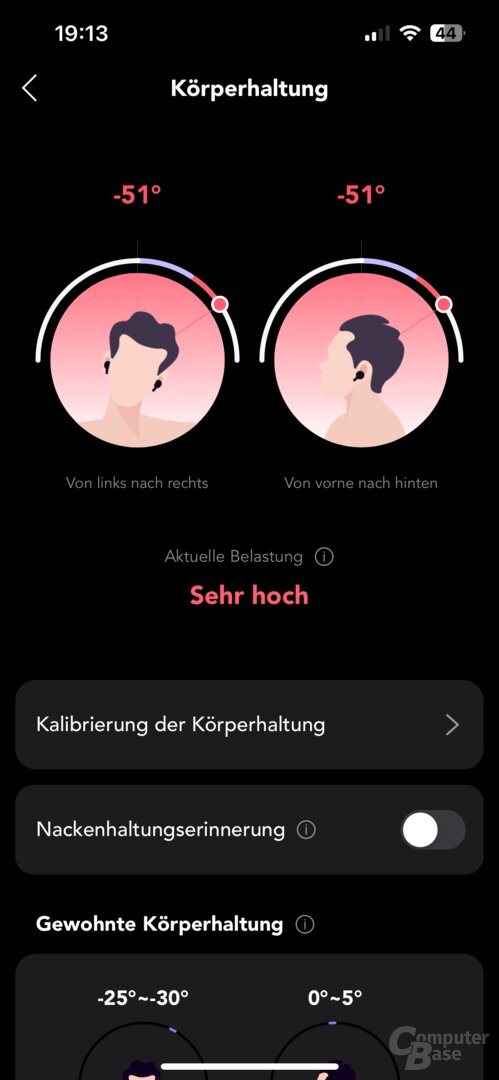 Heart rate and strain in the Soundcore app
Heart rate and strain in the Soundcore app Heart rate and stress in the Soundcore app
Heart rate and stress in the Soundcore app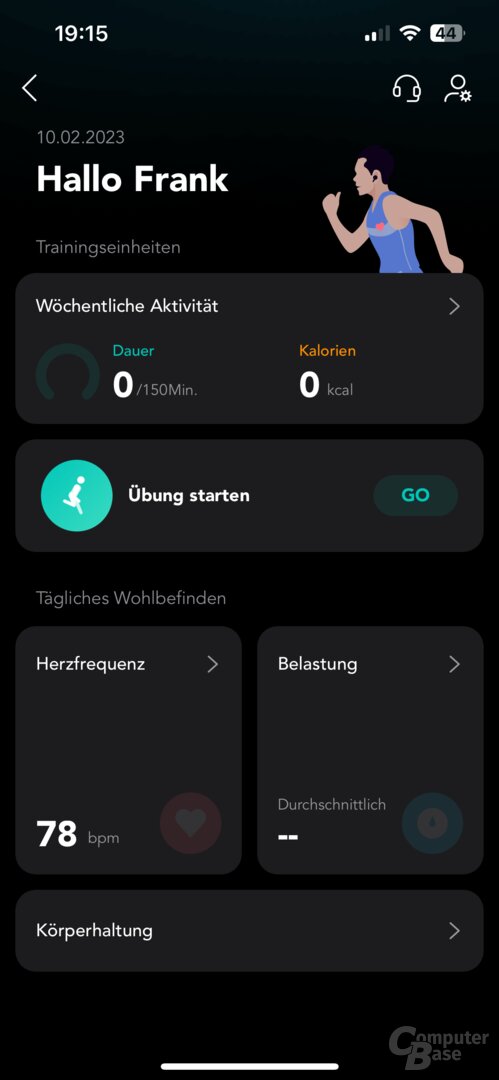 Heart rate and stress in the Soundcore app
Heart rate and stress in the Soundcore app Heart rate and stress in the Soundcore app
Heart rate and stress in the Soundcore app Heart rate and stress in the Soundcore app
Heart rate and stress in the Soundcore appWith this function, the Soundcore Liberty 4 does not replace a smartwatch that you wear on your wrist all day and continuously records your heart rate. The heart rate measurement function is primarily useful for getting started if you don't have a smartwatch or don't want to wear it during training. Otherwise, the monitoring via the sensor in the ear is usually too incomplete for monitoring the heart rate, since data is usually only collected for a few hours at a time, but then there are long breaks in the diagrams.
LDAC and Multipoint
In addition to SBC and AAC, the Liberty 4 support the Hi-Res audio codec LDAC with up to 990 kbit/s, 24 bit and 96 kHz sampling as well as an extended frequency response from 20 to 40,000 Hz. Bluetooth 5.3 is used as the radio standard . However, LE Audio, which would be possible from Bluetooth 5.2 and would replace SBC with LC3, is not represented. Bluetooth multipoint is also supported, so that the Liberty 4 can connect to two end devices at the same time and the playback can be seamlessly switched between them at any time. However, multipoint cannot be used in conjunction with LDAC, so you may have to make a decision here.
Anker installed a total of six microphones in the Liberty 4 for the ANC and telephony.
Sliding loading case
The dr Liberty 4 charging case measures 58.7 × 29.0 × 56.45 mm (W × H × D) and can be charged either via the USB-C port on the back or wirelessly according to the Qi standard using a charging pad. The example is not one of the smallest representatives, but its round shape makes it easy to carry with you in everyday life. Anker again relies on a cover that you can slide open and doesn't open. The earphones are easy to remove. To showcase the new heart rate sensor feature, Anker placed small LEDs in the charging case that light up the transparent ear tips when you slide open the lid. But they also have the practical function of indicating the approximate charge level of the earphones by flashing. An LED strip on the outer edge of the case does the same when charging the charging case.
- < figure class="gallery__figure">
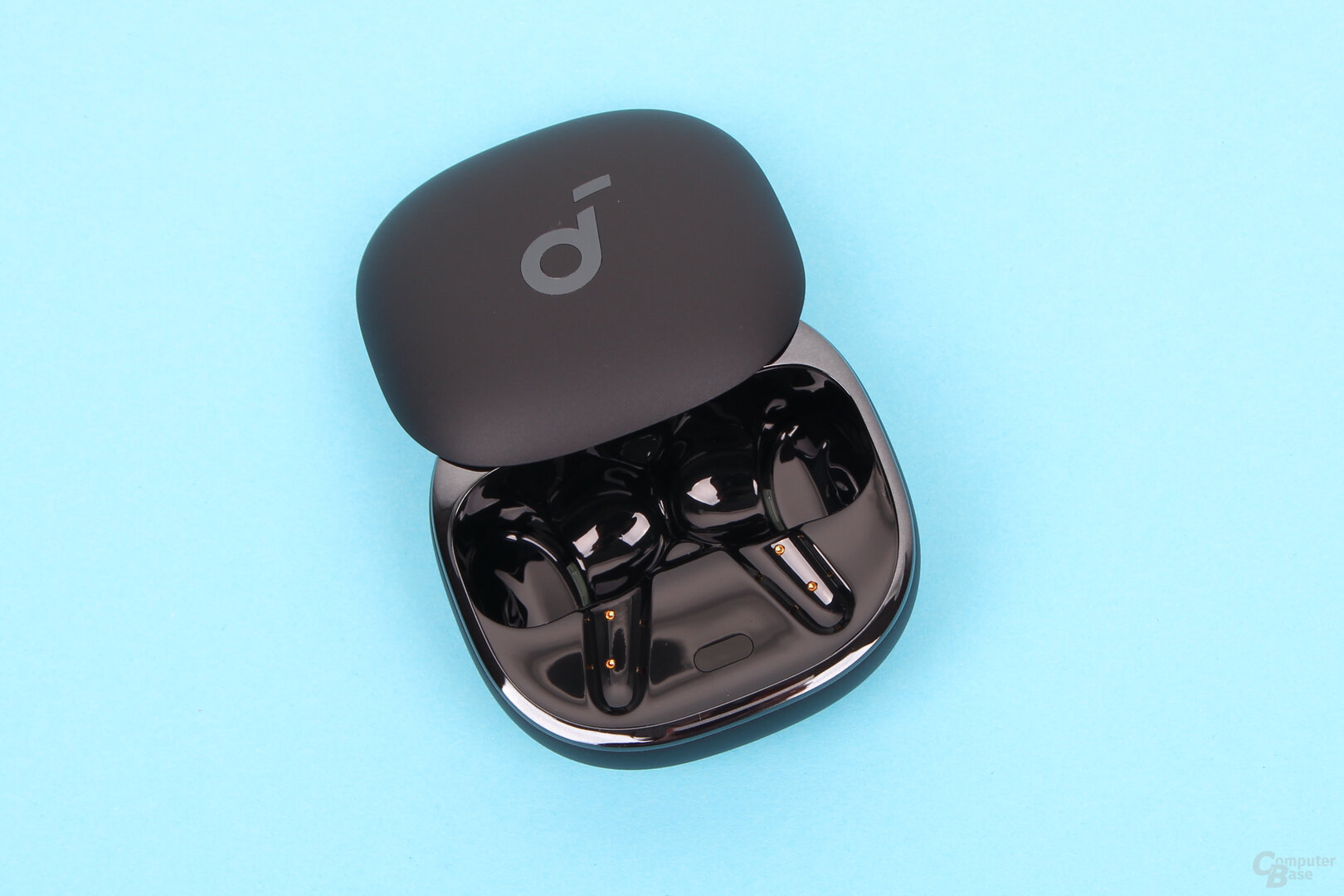 Soundcore Liberty 4: Slide-out loading case
Soundcore Liberty 4: Slide-out loading case
Image 1 of 3
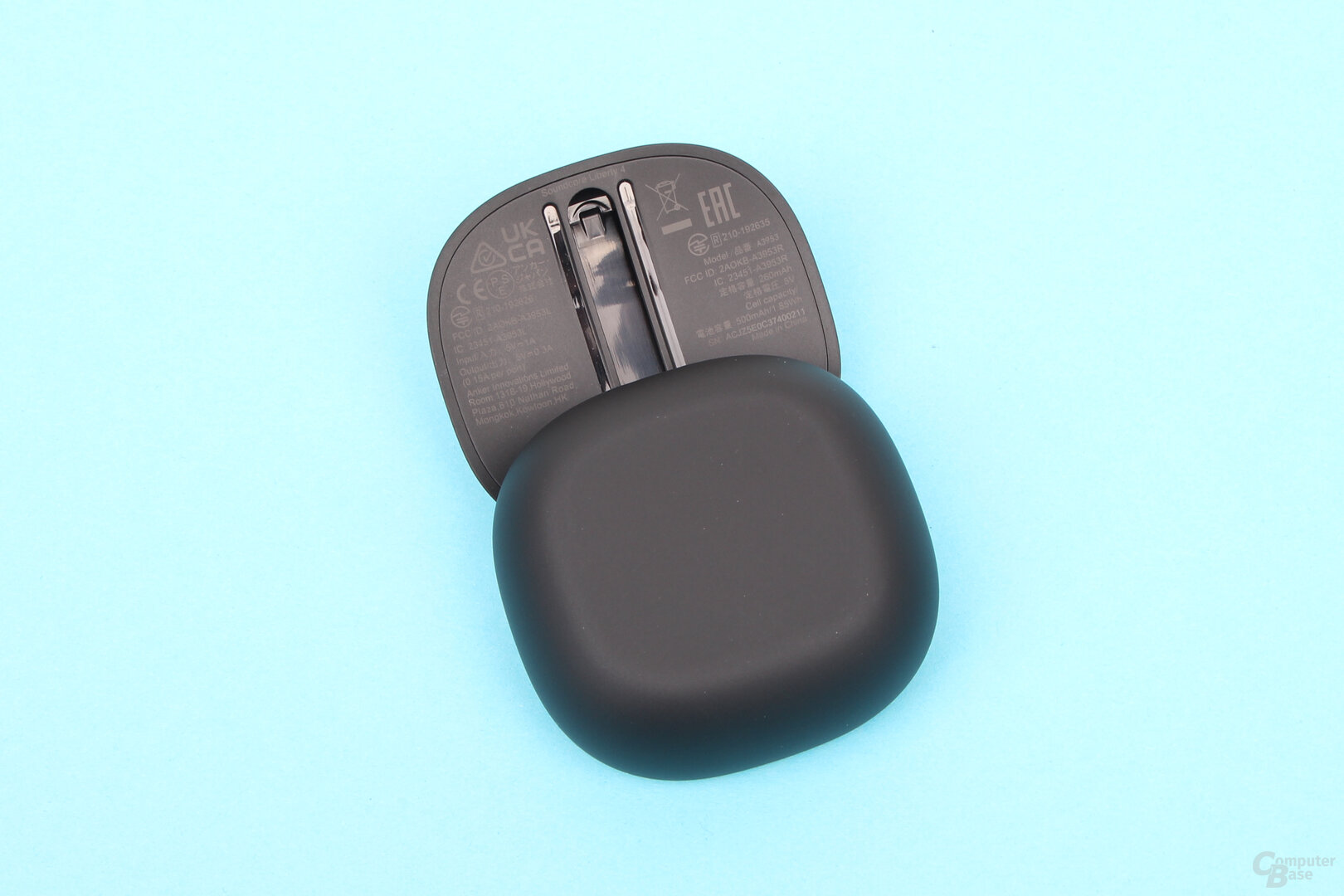 Soundcore Liberty 4: Slide-on loading case
Soundcore Liberty 4: Slide-on loading case Anker Soundcore Liberty 4
Anker Soundcore Liberty 4
The charging case alone weighs 43 g. Each earphone is pleasantly light at 6 g.
Up to 28 hours of battery life
According to Anker, the battery life is up to nine hours per charge. The charging case adds another 19 hours for a total of up to 28 hours of music playback without a power outlet.
In practice, this results in around 7:25 hours of music playback without ANC and with heart rate measurement at medium volume and a colorful music mix. With ANC, heart rate measurement and using LDAC, however, it is only enough for 5:45 hours. Not bad for what is on offer, but a good bit away from the advertised 9 hours without ANC or 7 hours with ANC. Thanks to fast charging, music can be played for almost 3 hours after 15 minutes of charging.
Anker Soundcore Liberty 4 Huawei FreeBuds 5i Bose QuietComfort EarBuds II Apple AirPods Pro Samsung Galaxy Buds 2 Pro Bluetooth standard: 5.3 5.2 5.3 5.0 5.3 Audio codecs: SBC, AAC, LDAC SBC, AAC SBC, AAC, SSC Operation: Key Touch Battery life the earphone: 9.0/7.0 (ANC) h7.5/6.0 (ANC) h6.0/6.0 (ANC) h5.0/4.5 (ANC) h8.0 /5.0 (ANC) h Battery life with charging case: 28.0 h 24.0 h 29.0 h Wireless charging: Yes – Yes ANC: Yes Single use: Yes IP certification: IPX4 IP54 IPX4 IPX7 Weight per earphone/charging case only : 6.0/43.0g 4.9/33.9g 6.3/60.0g 5.5/46.0g 5.5/43.4g USB Charge Port: USB-C Lightning USB -C Dimensions charging case: 29.0 × 58.7 × 56.5mm 48.2 × 61.8 × 26.9mm 66.3 × 59.4 × 26.7mm 45.2 × 60.6 × 21 .7 mm 50.1 × 50.2 × 27.7 mm Price: from €149 €99.99 from €249 from €239 from €155
Protected against sweat and splash water
The earphones are protected against water according to IPX4 protects. Rain and sweat during training cannot harm them. However, the earbuds may not be submerged for cleaning or worn while swimming.
Control with automatic pause
The control of the Liberty 4 is based on that of the AirPods Pro. To operate, the handle of the earphones is taken between the thumb and forefinger and gently pressed. The amount of pressure required to trigger a function can be set in the app to prevent unwanted operation.
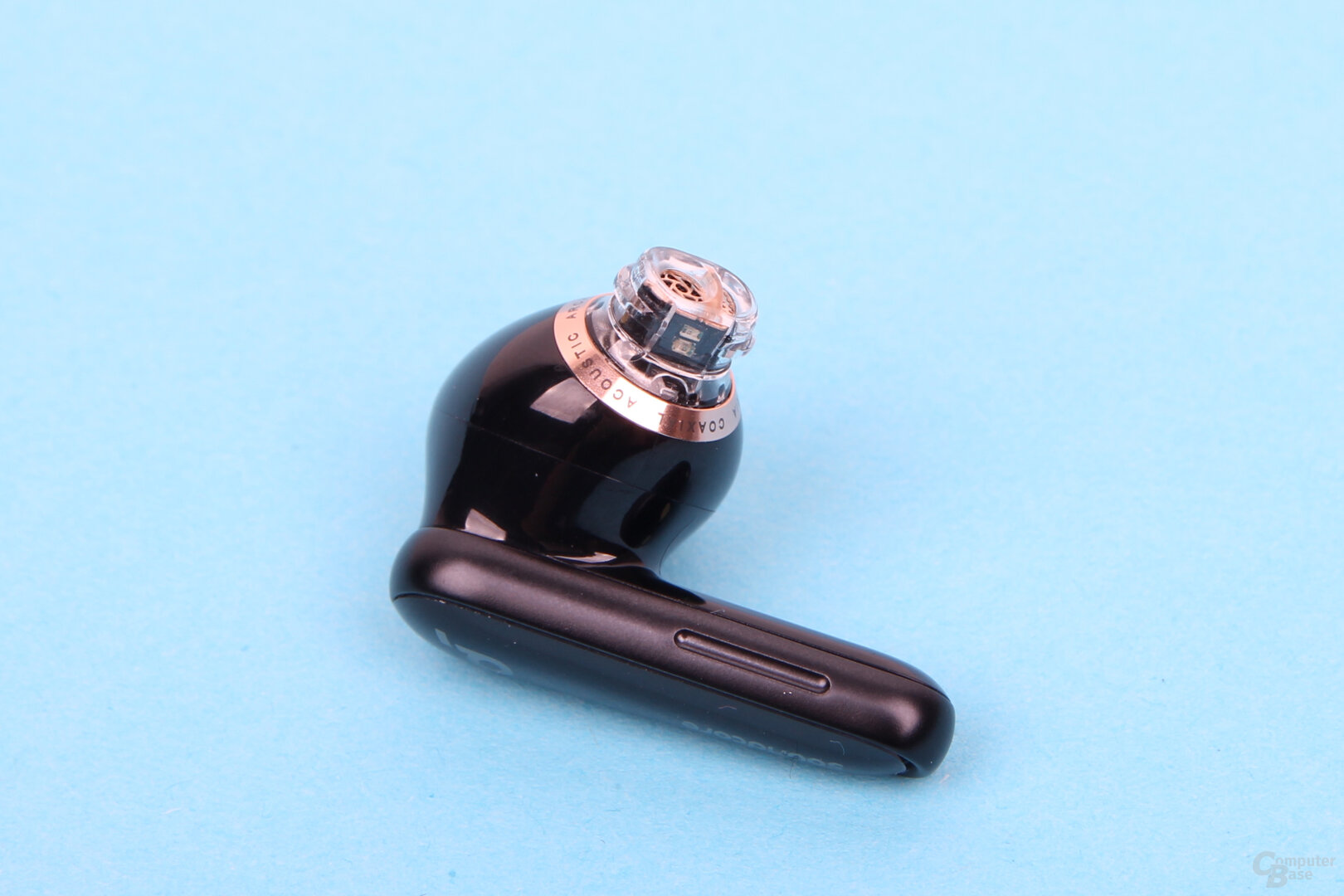 Heart rate sensor in the right earbud of the Soundcore Liberty 4
Heart rate sensor in the right earbud of the Soundcore Liberty 4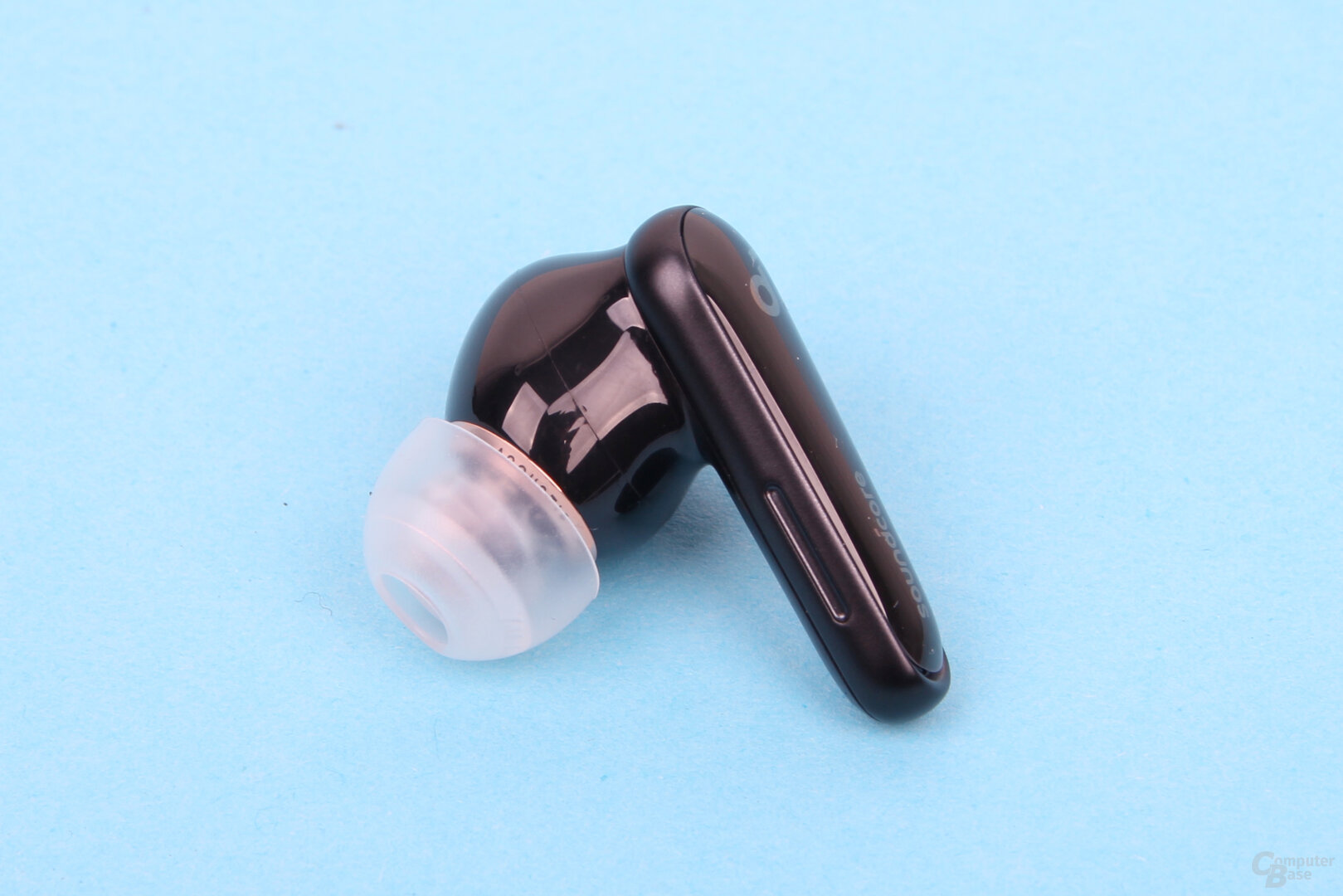 Anker Soundcore Liberty 4
Anker Soundcore Liberty 4 Anker Soundcore Liberty 4
Anker Soundcore Liberty 4A single press starts and pauses playback, while a double press toggles between the sound modes, i.e. ANC, Transparency and Normal. Whether you want to switch between all or just individual modes can be set in the app. If only one earphone is used, a single press also serves to start and pause playback, but a double press skips one track forward. Pressing three times skips back one track (left) or one track forward (right).
The Anker Soundcore Liberty 4 also have a function to automatically pause playback when a earphone is removed from the ear. The wearer detection sensor works reliably. The function can also be calibrated again and switched off in the Soundcore app, if desired.
-
 Wearer ID for the Liberty 4
Wearer ID for the Liberty 4
Image 1 of 2
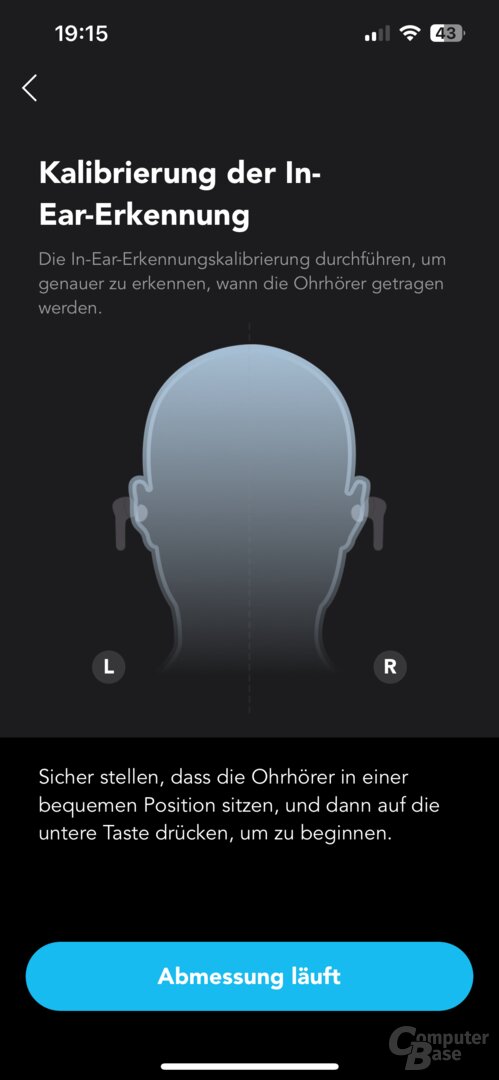 Wearing ID for the Liberty 4
Wearing ID for the Liberty 4Adjusting the volume is therefore initially not possible ex works.
Adjusting the controls in the app
However, Anker's Soundcore app allows you to adjust the assignment. Single, double and triple presses can be reassigned for each earbud and the following functions are available: volume + and -, next, previous, play/pause, Siri (on iOS), ambient noise and “None”. . Functions such as “volume +” can be assigned independently of their counterpart, so that six independent functions can actually be configured.
-
Controlling and customizing the Liberty 4
Image 1 of 7
 < /figure>
< /figure>


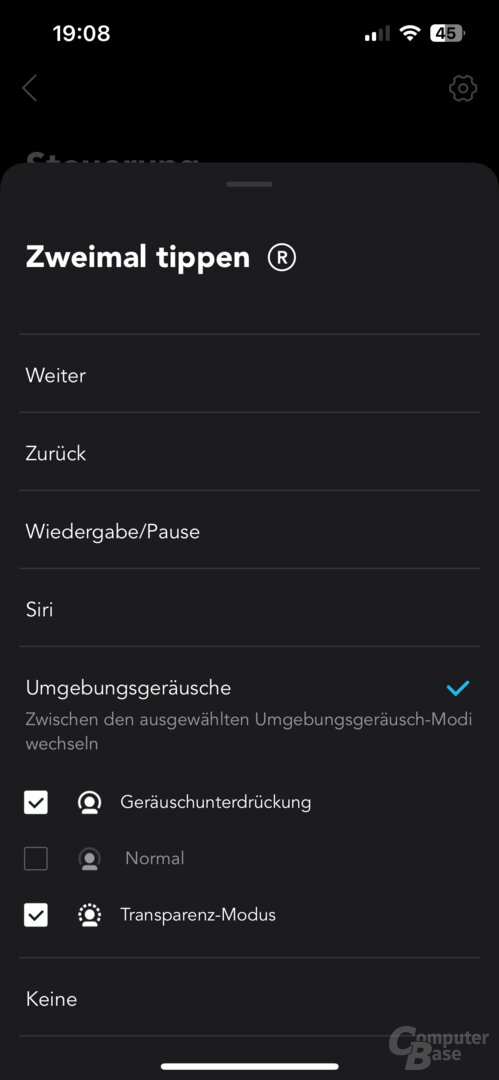


Controlling and customizing the Liberty 4
Hassle-free single use
As mentioned, both earphones can also be used individually without any problems. If wearer detection is activated, playback pauses when switching from stereo to mono and must be activated again manually. The switch from mono to stereo, on the other hand, always occurs seamlessly without interruption.
Extensive soundcore app
The Soundcore app has already been mentioned several times in the test. In addition to adjusting the controls and wearing recognition, it now has a new “Health” area, in which not only can the heart rate measured by the Liberty 4 be viewed, but Anker also offers a few small health courses here, for example “Brisk walking” and Running.
-
 Soundcore app running Liberty 4
Soundcore app running Liberty 4
Image 1 of 17
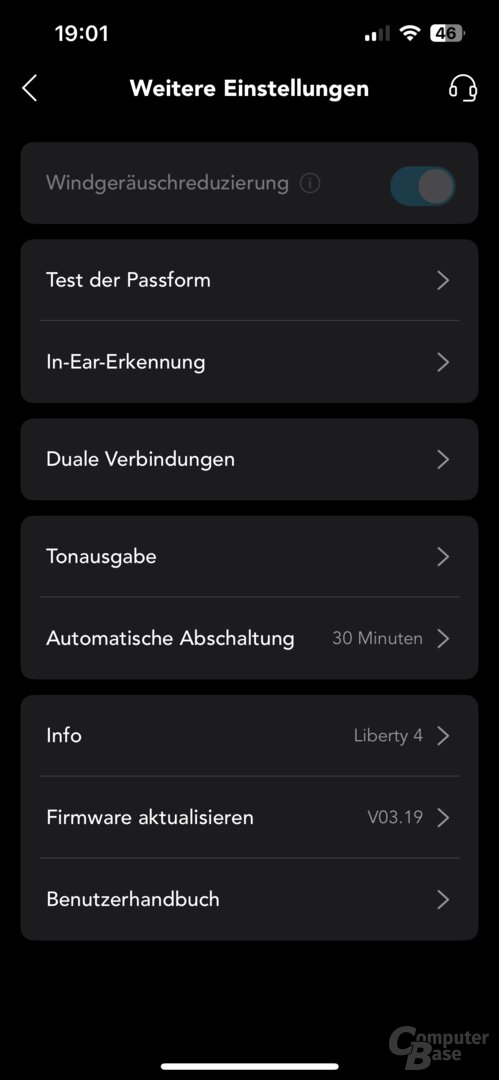 Liberty 4 settings in the Soundcore app
Liberty 4 settings in the Soundcore app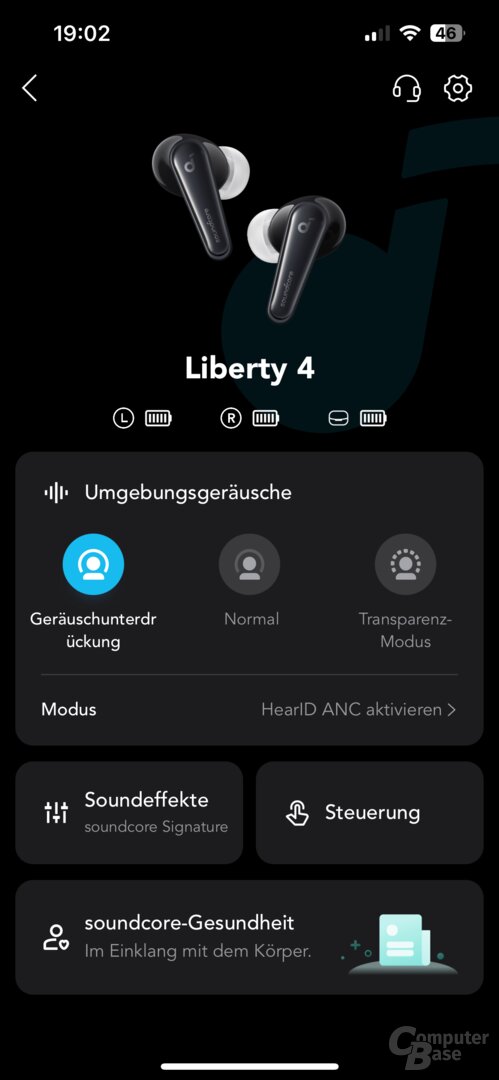 Soundcore app with Liberty 4
Soundcore app with Liberty 4 HearID in the Soundcore app with the Liberty 4
HearID in the Soundcore app with the Liberty 4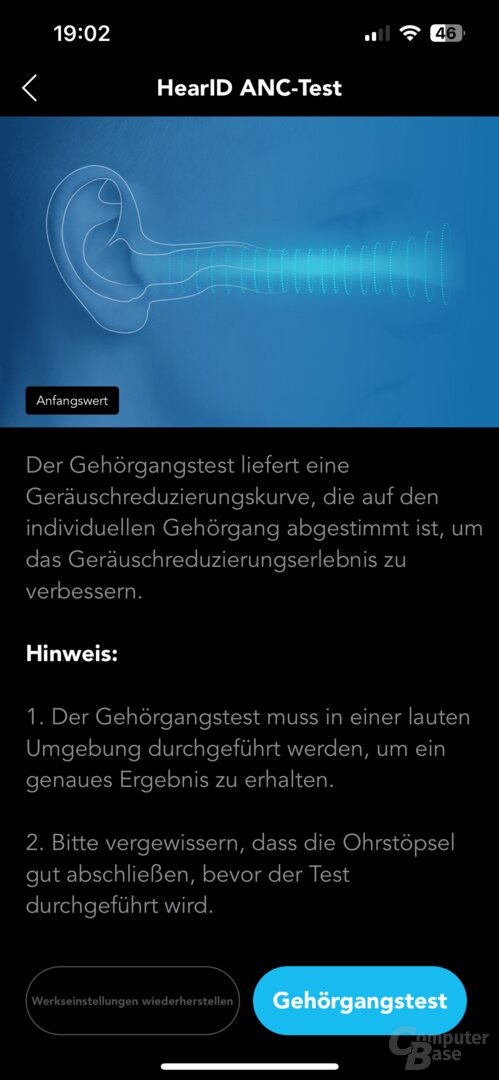 HearID in the Soundcore app with the Liberty 4
HearID in the Soundcore app with the Liberty 4 HearID in the Soundcore app with the Liberty 4
HearID in the Soundcore app with the Liberty 4 Liberty 4 fit test
Liberty 4 fit test Fit test of the Liberty 4
Fit test of the Liberty 4 Liberty 4 fit test
Liberty 4 fit test HearID in the Soundcore app with the Liberty 4
HearID in the Soundcore app with the Liberty 4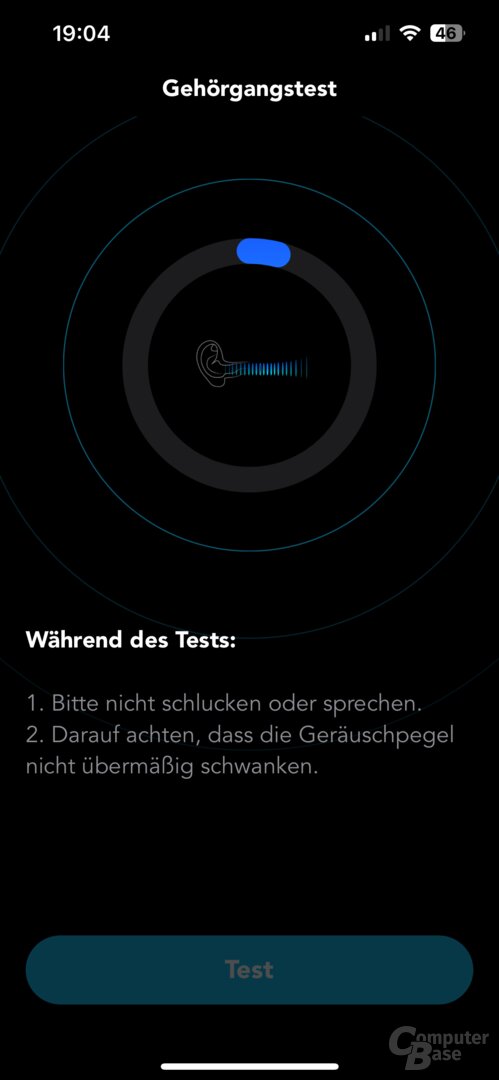 HearID in the Soundcore app with the Liberty 4
HearID in the Soundcore app with the Liberty 4 HearID in the Soundcore app with the Liberty 4
HearID in the Soundcore app with the Liberty 4 HearID in the Soundcore app with the Liberty 4
HearID in the Soundcore app with the Liberty 4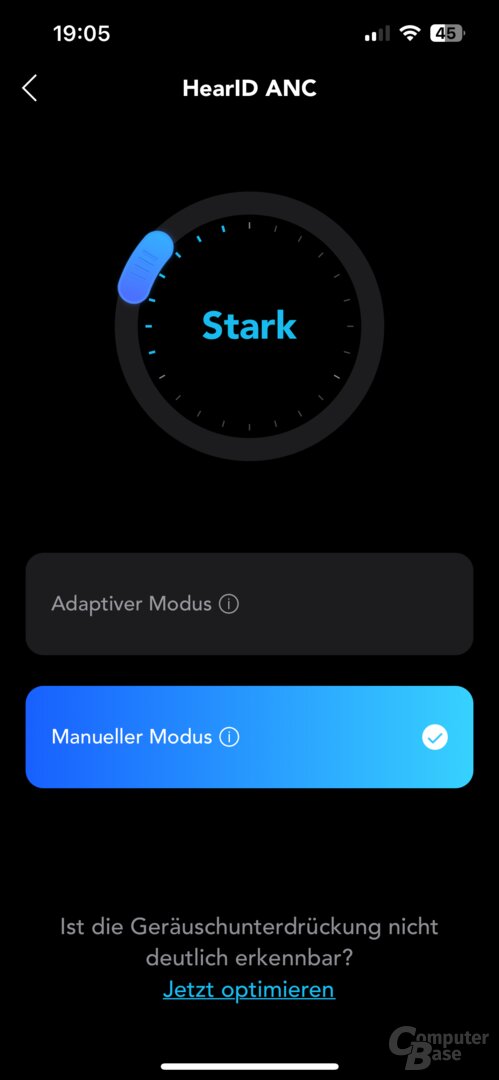 HearID in the Soundcore app with the Liberty 4
HearID in the Soundcore app with the Liberty 4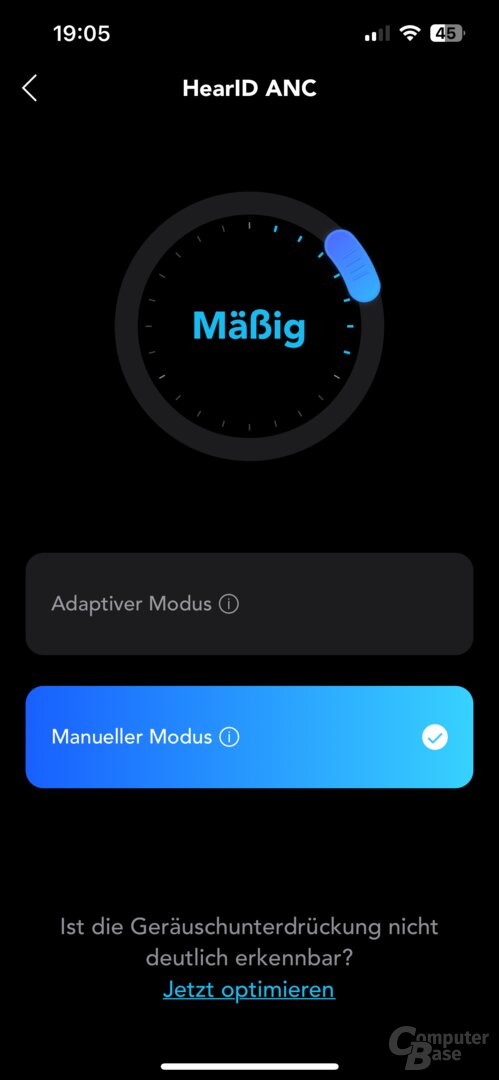 HearID in the Soundcore app with the Liberty 4
HearID in the Soundcore app with the Liberty 4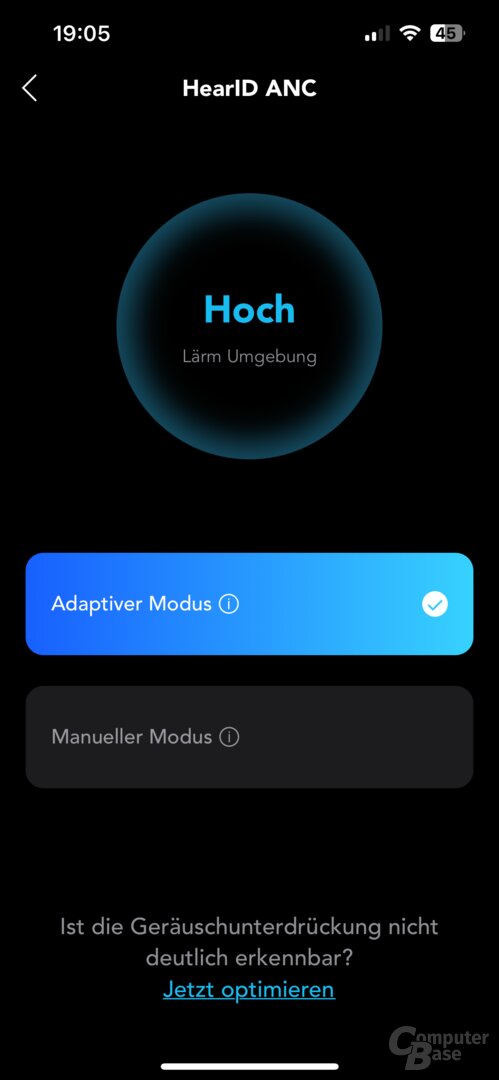 HearID in the Soundcore app with the Liberty 4
HearID in the Soundcore app with the Liberty 4 Soundcore app with Liberty 4
Soundcore app with Liberty 4In addition, the ANC, the transparency mode and the normal mode can also be switched in the app. With ANC and transparency mode, wind noise reduction can also be switched on in the app. The ANC allows individual adjustment. Because while HearID stands for the personal sound profile at Soundcore, which is created for the user via the app in a hearing test and generates an adapted frequency curve, the Liberty 4 also offer HearID ANC again. The latter is noise-cancelling, adapting the ANC to the personal fit of the earbuds by taking measurements through the microphones in noisy environments. If ANC is activated, the ANC settings in the app can be used to specify whether adaptive mode, in which the ANC automatically adapts to the environment, or manual mode should be selected. In manual mode, you can then adjust the strength of the ANC yourself. However, it then remains the same regardless of the environment.
- < figure class="gallery__figure">
 Sound effects for the Liberty 4 in the Soundcore app
Sound effects for the Liberty 4 in the Soundcore app
Image 1 of 9
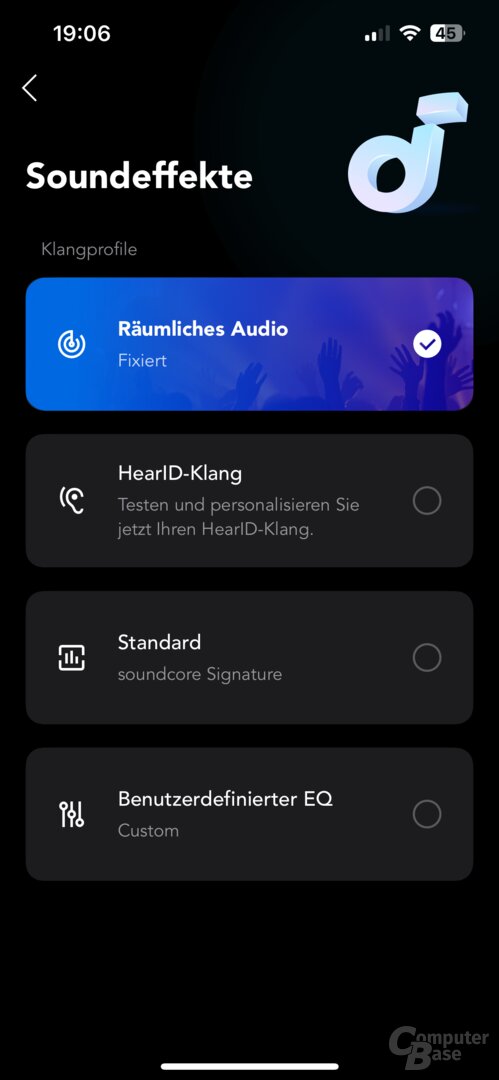 Sound effects for the Liberty 4 in the Soundcore app
Sound effects for the Liberty 4 in the Soundcore app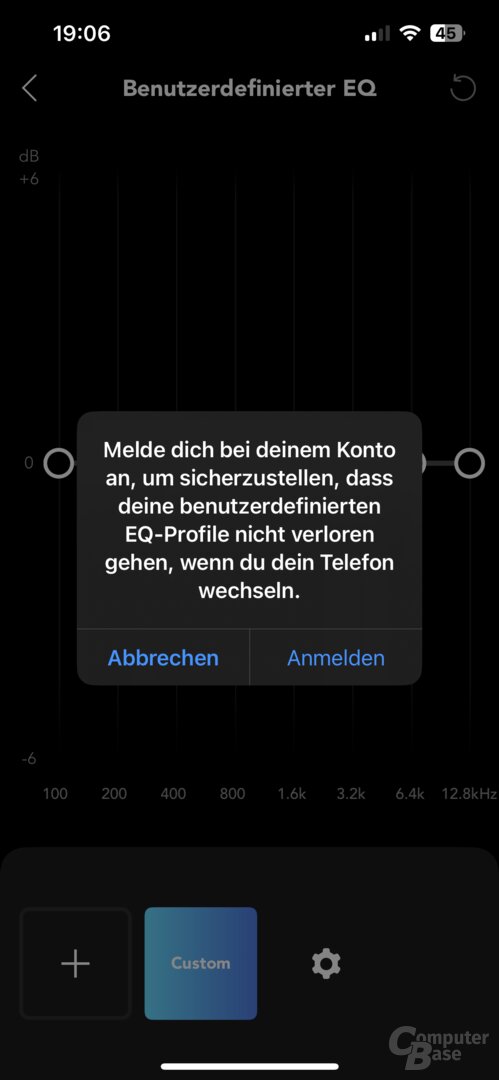 Custom Equalizer for Liberty 4
Custom Equalizer for Liberty 4 Custom Equalizer for Liberty 4
Custom Equalizer for Liberty 4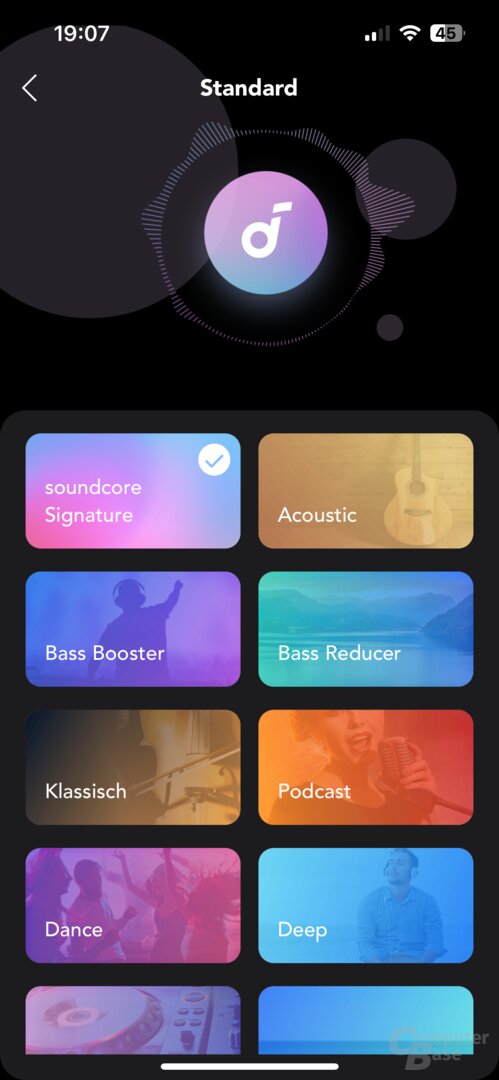 Equalizer presets for Liberty 4
Equalizer presets for Liberty 4 Spatial audio for Liberty 4
Spatial audio for Liberty 4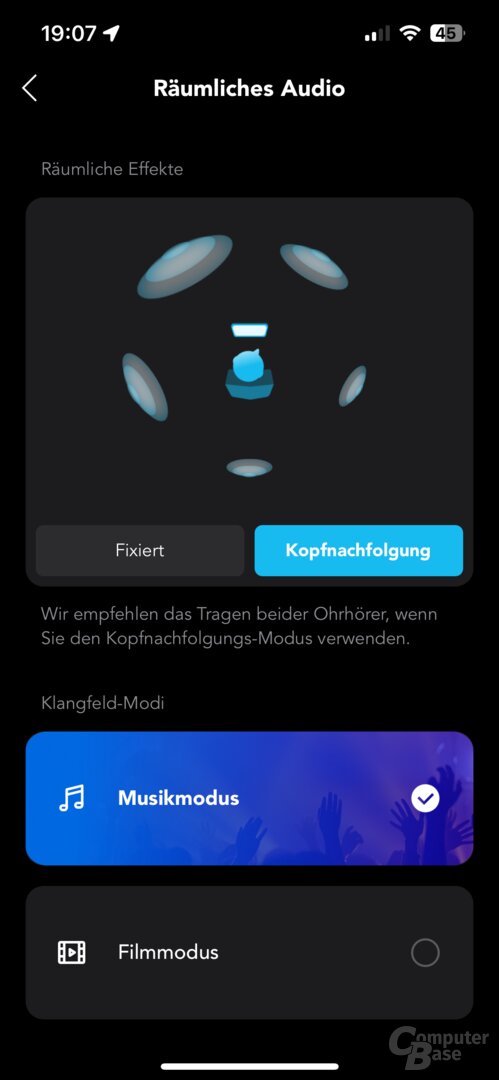 Spatial Audio for Liberty 4
Spatial Audio for Liberty 4 HearID sound customization for Liberty 4
HearID sound customization for Liberty 4The sound effects can be toggled between spatial audio, HearID sound, standard and a custom equalizer. The equalizer again offers either presets for adjusting the sound or the option of making individual adjustments in eight bands between 100 Hz and 12.8 kHz, which can also be saved.
The spatial audio, in which the earphones change their sound relative to the position of the playback device, also works reliably in everyday use. When using the in-ears, it seems as if the sound is always coming from the tablet in front of you, even if you turn your head to the side.
In addition to the now obligatory firmware updates, the app also offers an overview of the battery status of the individual earphones and a fit test. In this case, music is briefly played in a quiet environment and it is checked how much leaks out. Options for automatic shutdown and for the aforementioned dual connection (multipoint) can also be found in the settings. As mentioned, the latter costs support for LDAC.
-
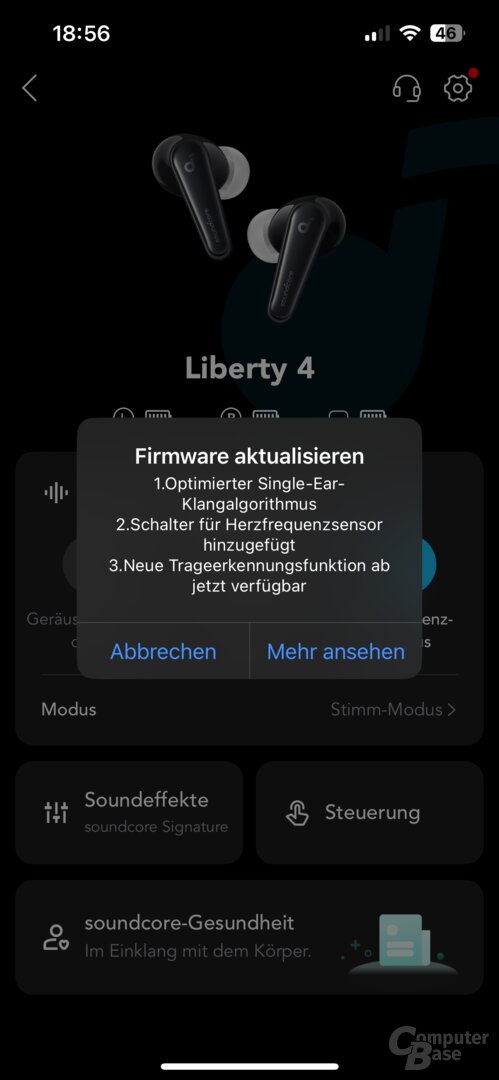 Soundcore App with Liberty 4: Firmware Update
Soundcore App with Liberty 4: Firmware Update
Image 1 of 4
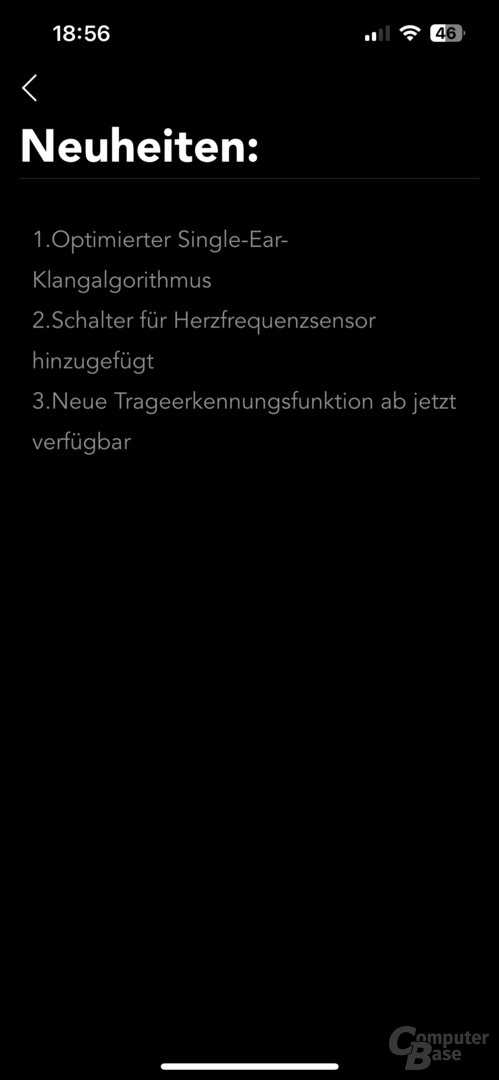
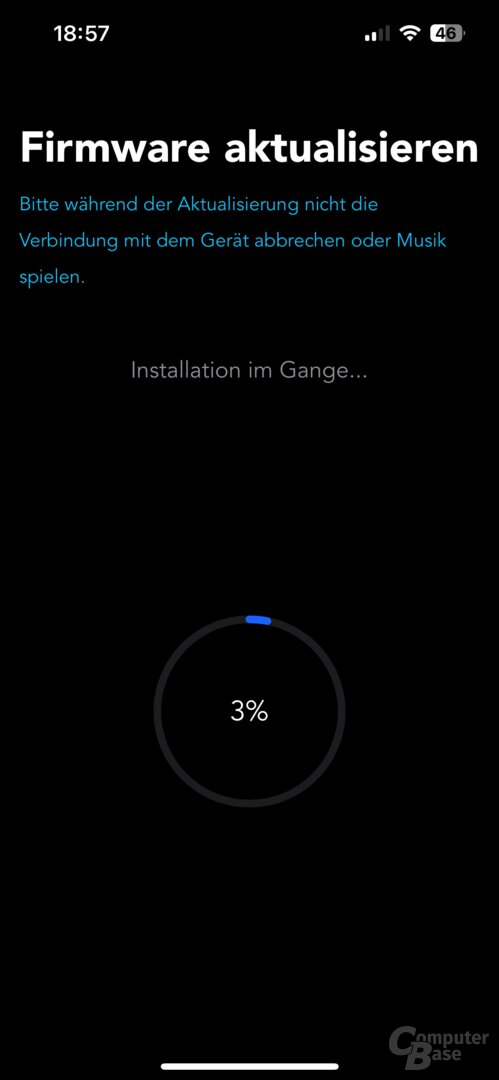
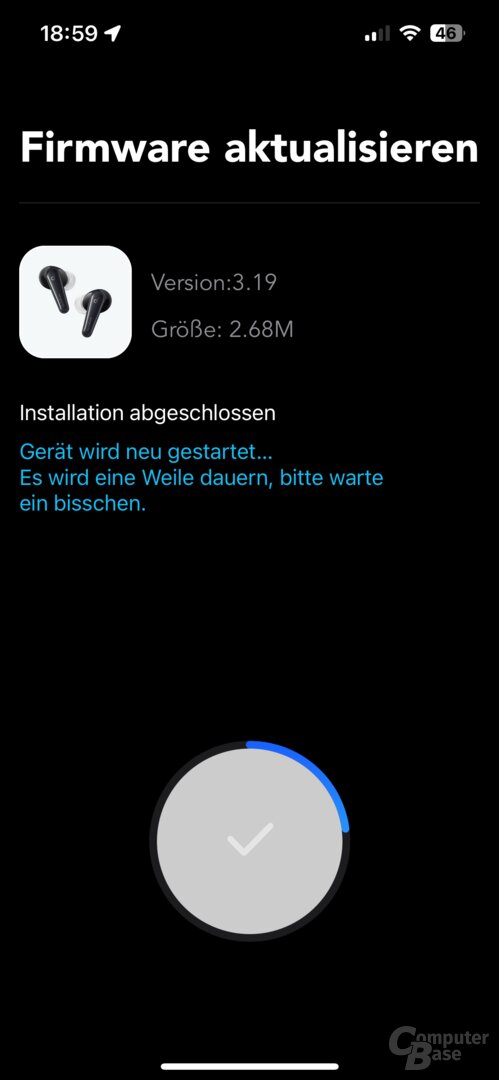
Soundcore App with Liberty 4: Firmware Update
Very pleasant seat
The in-ear headphones from Anker sit very comfortably in the ear and exert almost no pressure. They can be worn for hours without any problems – an important point if you actually want to use them to record your heart rate over a longer period of time. At the same time, they sit so firmly in the ear that they don't fall out when jogging.
The sound of the Soundcore Liberty 4
The Soundcore Liberty 4 deliver a good sound that is largely convincing even without adjustment, but sounds a bit too harsh in the highs and too dull in the mids. It's the highs again, so to speak, but this time the anchors not only cause some problems at high volume and start to hiss and sound a bit harsh. The mids are separated well, voices are clear and understandable. However, the emphasis on the mids already shows that the bass in particular is emphasized, whereas the mids can hardly assert themselves and fall off a bit too much. That sounds modern and delivers a voluminous bass foundation that can develop a lot of pressure. With very soft tones, however, the deep bass in St Jude by Florence + The Machine disappears too early and can no longer be made out.
With the equalizer and HearID you can definitely improve the sound of the Liberty 4 and you should give both options a chance if the standard sound seems a bit too dull and you prefer to hear more neutral tones.
If you want an even better sound, you can find it at a higher price with the Sennheiser Momentum True Wireless 2 (test), the Sony WF-1000XM4 (test) and the Bose QuietComfort Earbuds II. Also the commercially available Samsung Galaxy Buds 2 Pro (test) are slightly ahead in terms of sound.
Frequency response analysis
ComputerBase also carries out frequency response measurements for the wireless in-ear headphones. For this, the miniDSP Headphone & Earphone Audio Response System (H.E.A.R.S.) in connection with the software REW. This is not an IEEE standardized measuring station. However, it provides good comparative values, which in particular enable the headphones under consideration to be compared with one another. The microphones in the right and left ear of the miniDSP H.E.A.R.S. are calibrated. Since the miniDSP H.E.A.R.S. no inner ear modeled, but has a straight auditory canal, the measurements alone are not a sufficient criterion for a final assessment of the sound, but can only be seen as supplements to the descriptions. Clarity and dynamics cannot be rated either.
The sound pressure of all headphones is calibrated at around 84 dB at 300 Hz – not all in-ears can be set to exactly 84 dB here, so that a deviation of 1 dB up and down has to be accepted. All measurements are carried out according to the manufacturer's specifications from 20 Hz to 20 kHz several times and with different earphone positions in order to take these influences into account and to detect a bad fit. In the case of in-ears, this quickly becomes apparent in strong outliers, an unclean frequency response or a complete lack of bass with poor sealing. The results are averaged and smoothed from five measurements per side with the best established fit. A straight line at 84 dB would correspond to a neutral presentation of the frequencies, which is never achieved in reality.
-
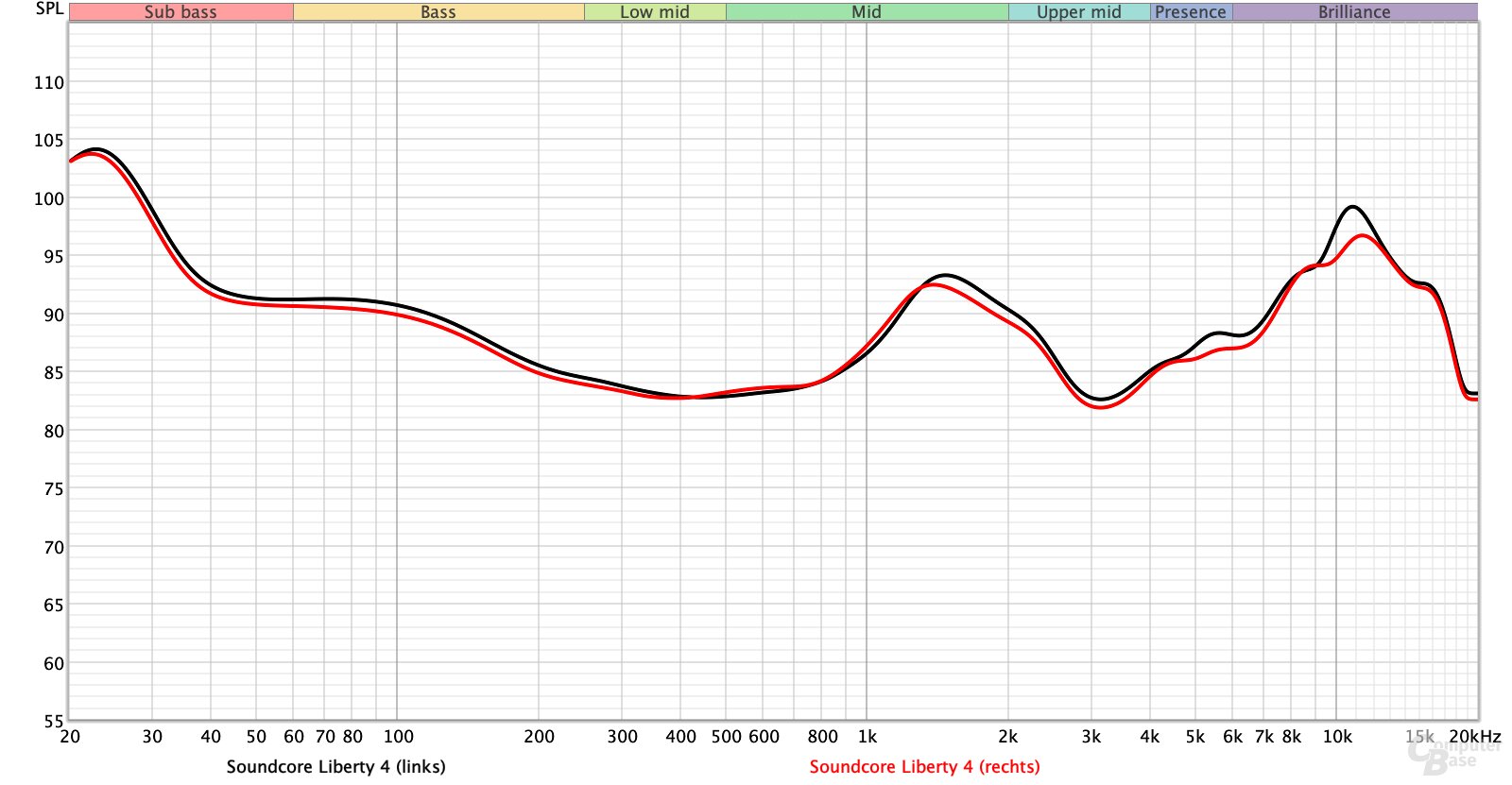 Frequency response of the Anker Soundcore Liberty 4
Frequency response of the Anker Soundcore Liberty 4
Image 1 of 25
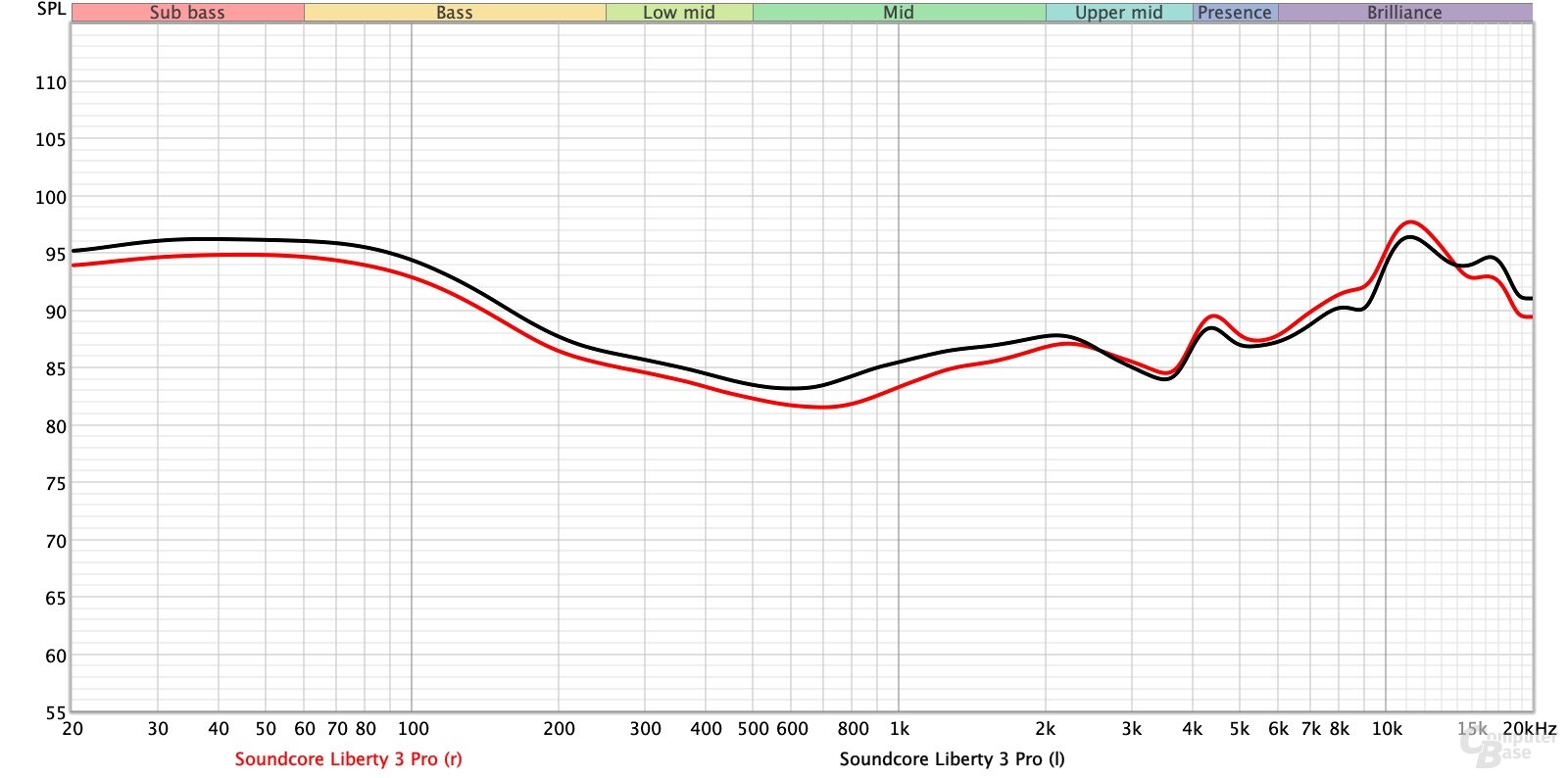 Frequency Response: Soundcore Liberty 3 Pro
Frequency Response: Soundcore Liberty 3 Pro Frequency response of the Huawei FreeBuds 5i
Frequency response of the Huawei FreeBuds 5i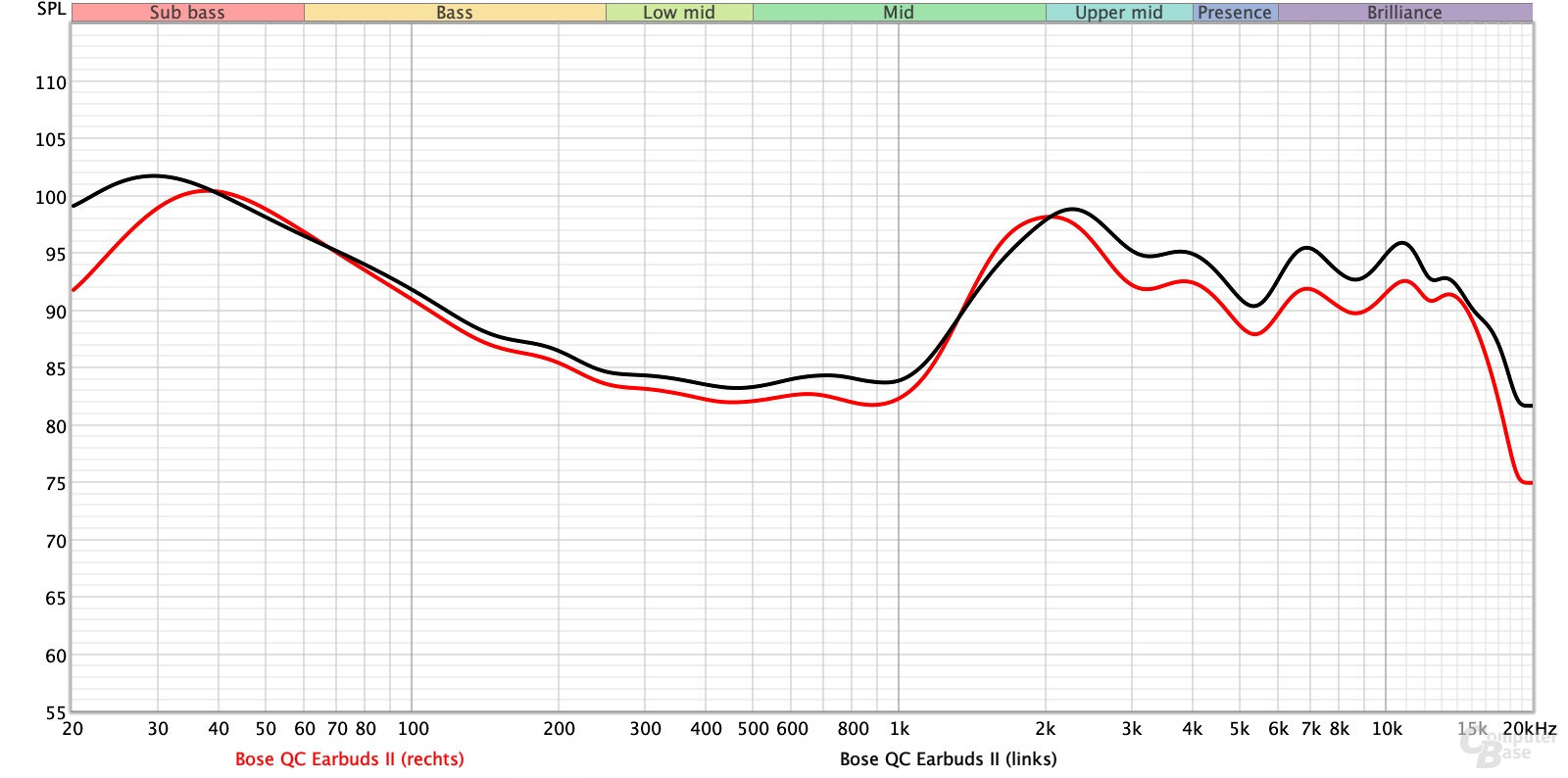 Frequency response of the Bose QuietComfort Earbuds II
Frequency response of the Bose QuietComfort Earbuds II Frequency response of the Samsung Galaxy Buds 2 Pro
Frequency response of the Samsung Galaxy Buds 2 Pro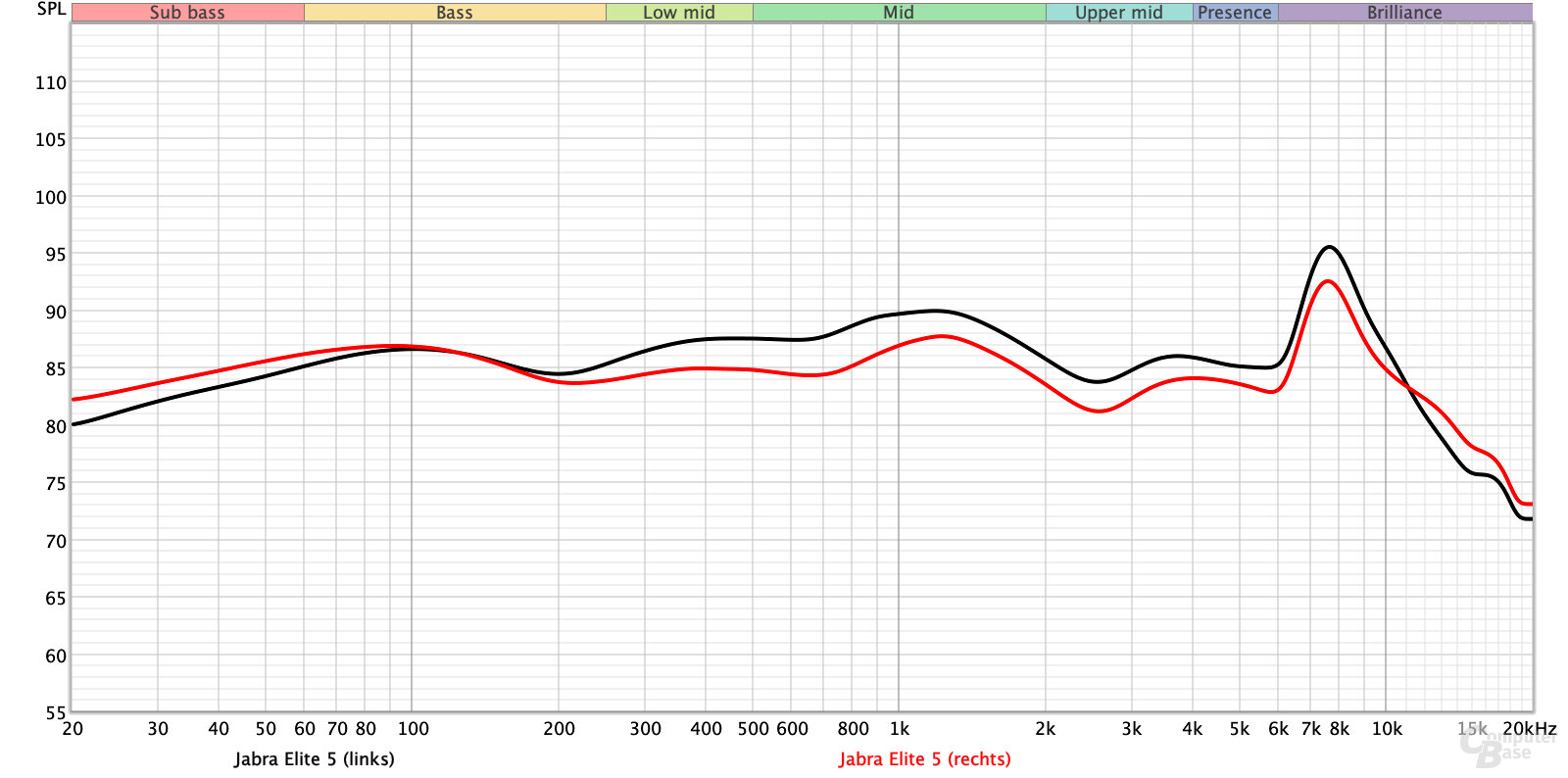 Jabra Elite 5 frequency response
Jabra Elite 5 frequency response Frequency response: Jabra Elite 3
Frequency response: Jabra Elite 3
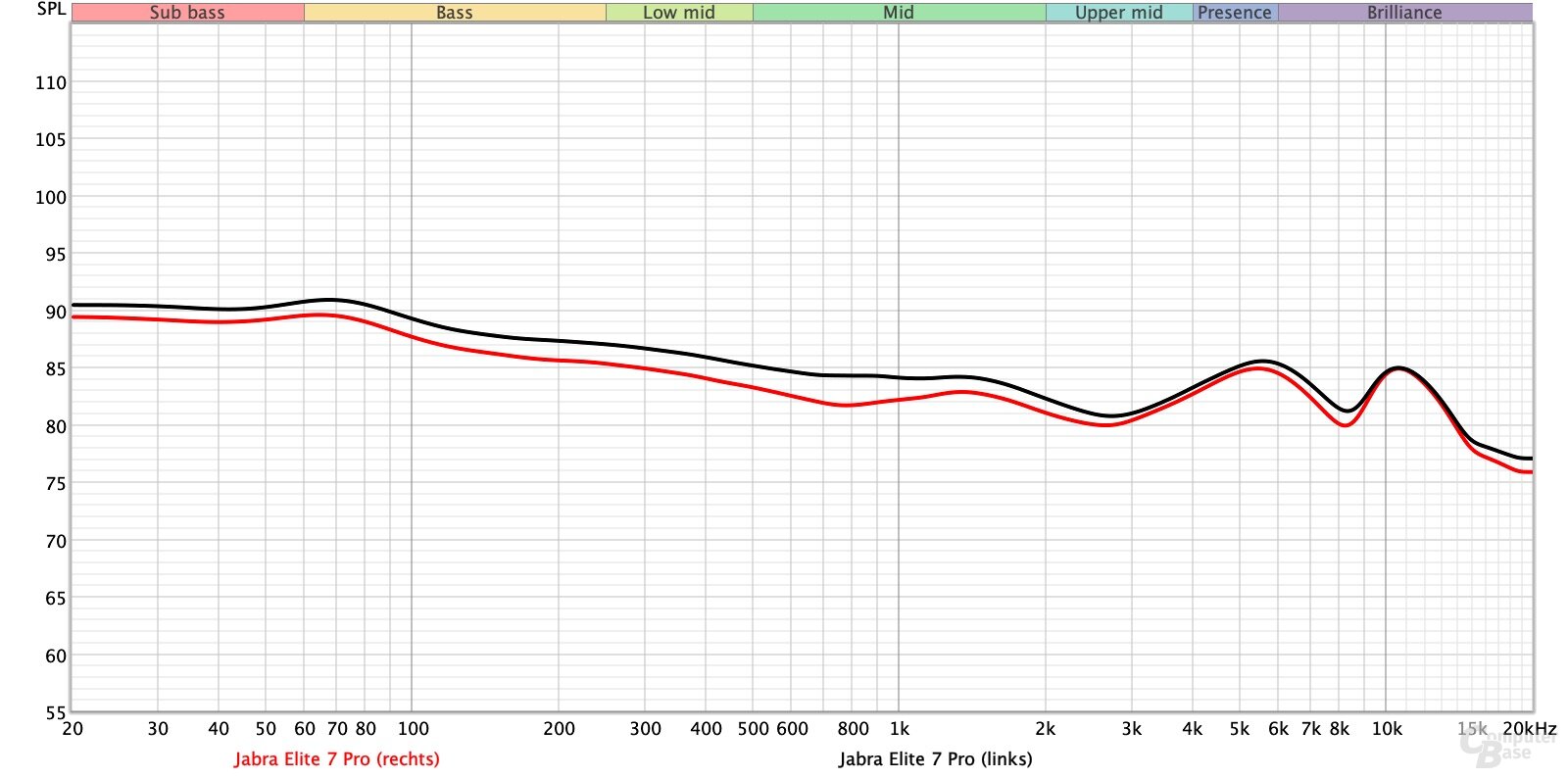 Frequency response: Jabra Elite 7 Pro
Frequency response: Jabra Elite 7 Pro Frequency response: Jabra Elite 85t
Frequency response: Jabra Elite 85t Frequency response of the Huawei FreeBuds Pro 2
Frequency response of the Huawei FreeBuds Pro 2 Frequency response of the Sony LinkBuds S
Frequency response of the Sony LinkBuds S Sony LinkBuds Frequency Response
Sony LinkBuds Frequency Response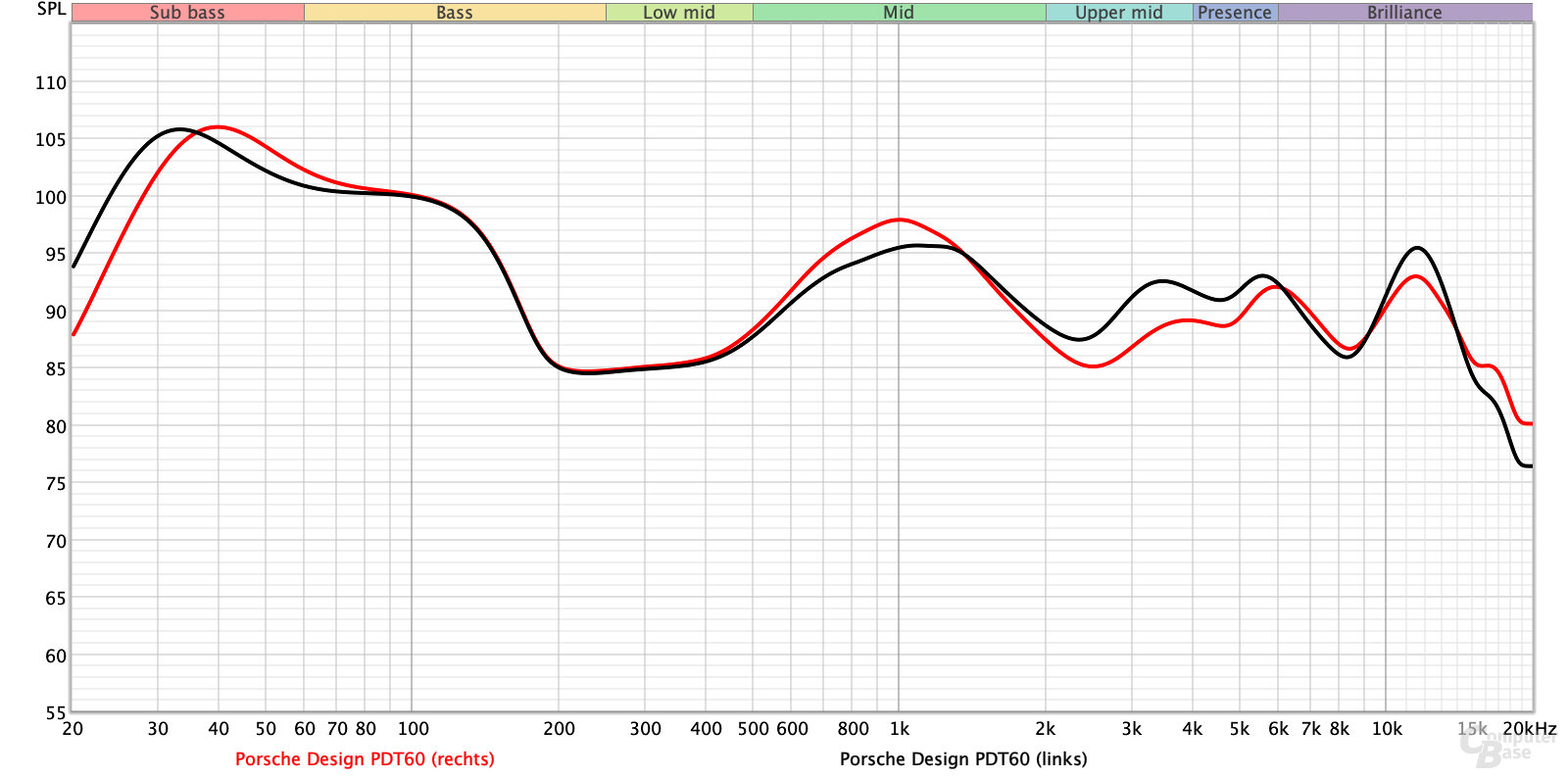 Frequency response of the Porsche Design PDT60
Frequency response of the Porsche Design PDT60 Frequency Analysis of the Skullcandy Grind Fuel
Frequency Analysis of the Skullcandy Grind Fuel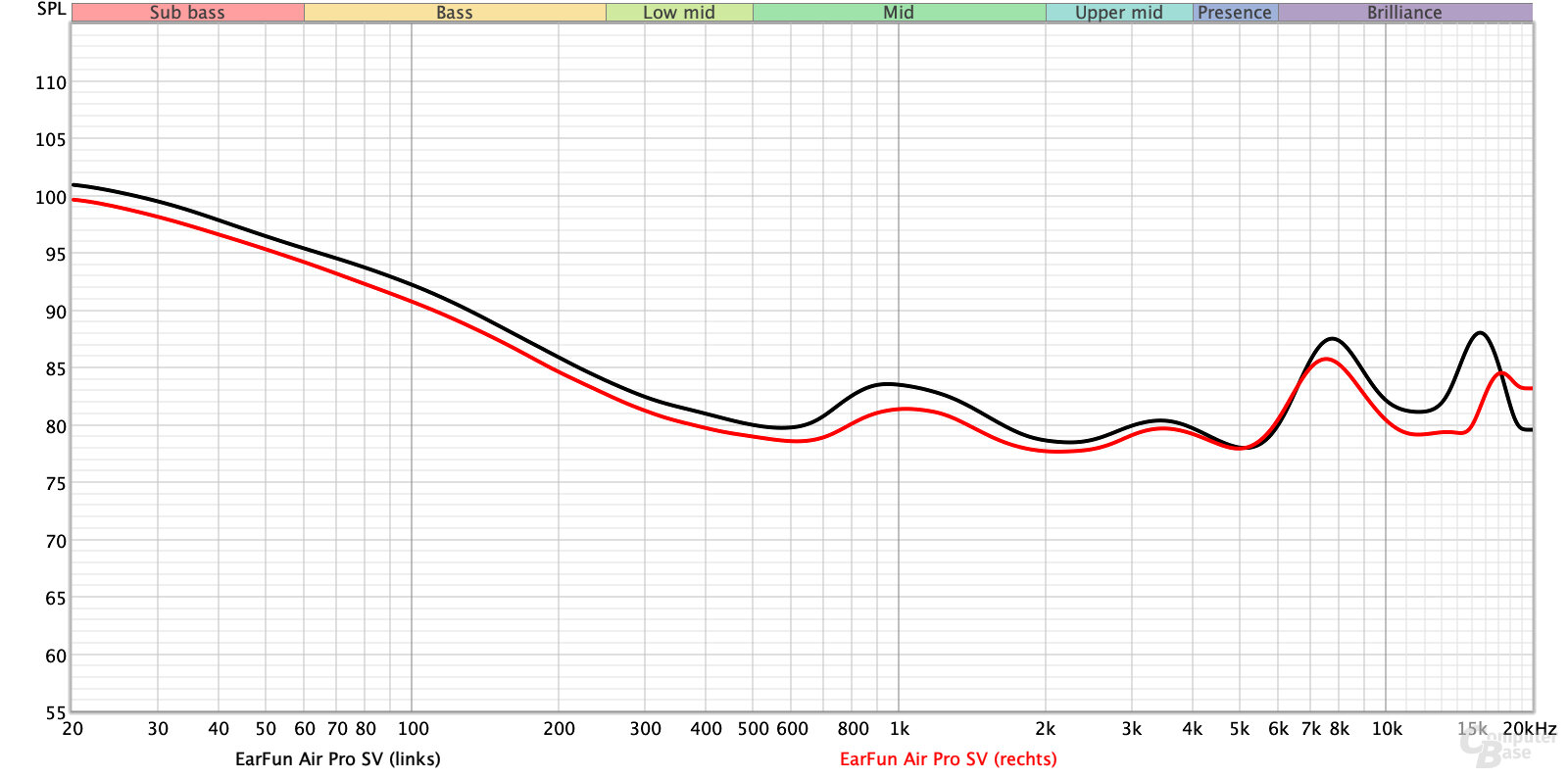 Frequency response of the EarFun Air Pro SV
Frequency response of the EarFun Air Pro SV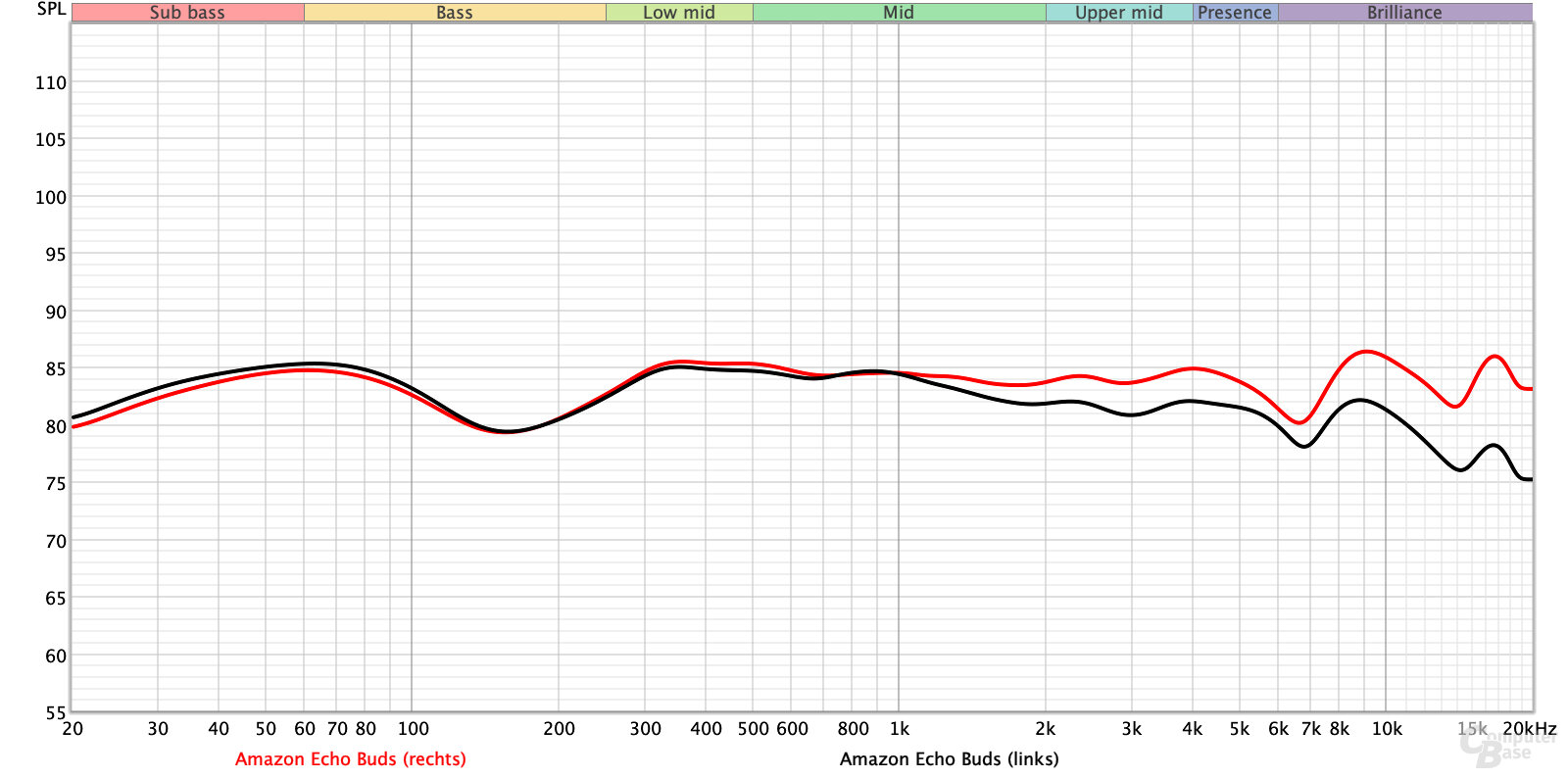 Amazon Echo Buds Frequency Response
Amazon Echo Buds Frequency Response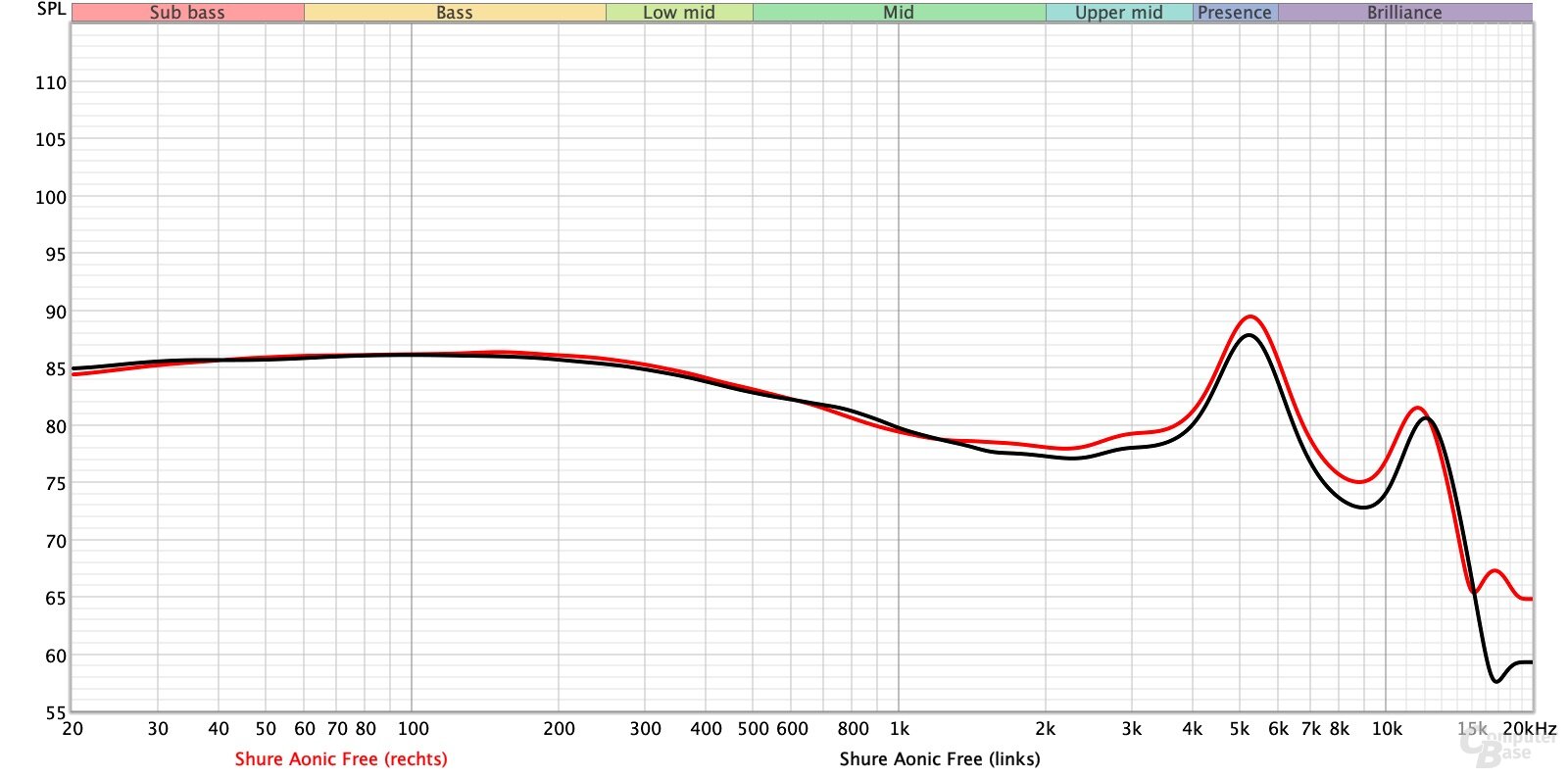 Frequency response: Shure Aonic Free
Frequency response: Shure Aonic Free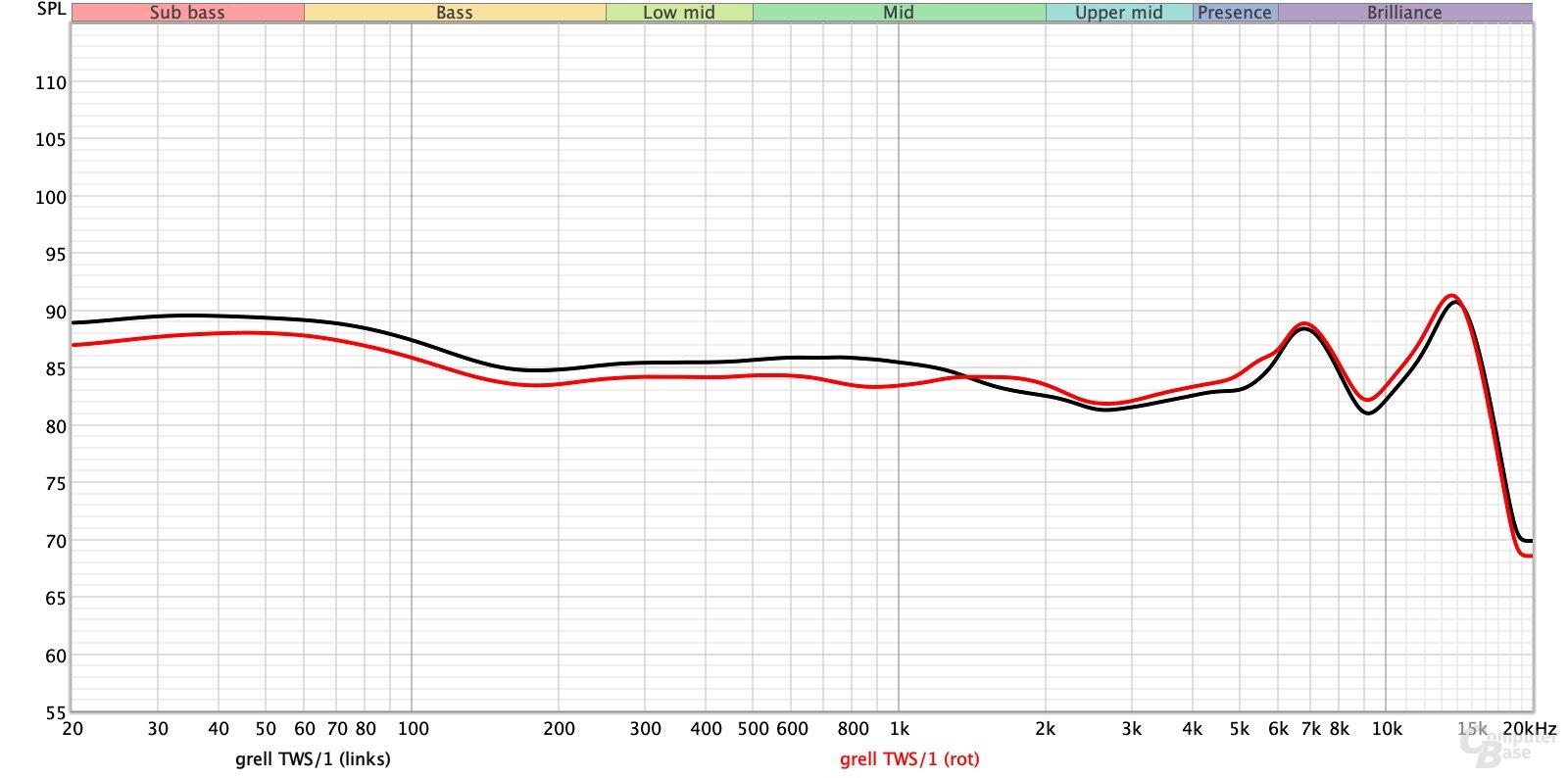 Frequency response: glaring TWS/1
Frequency response: glaring TWS/1 Frequency response: Sennheiser Momentum TWS 2
Frequency response: Sennheiser Momentum TWS 2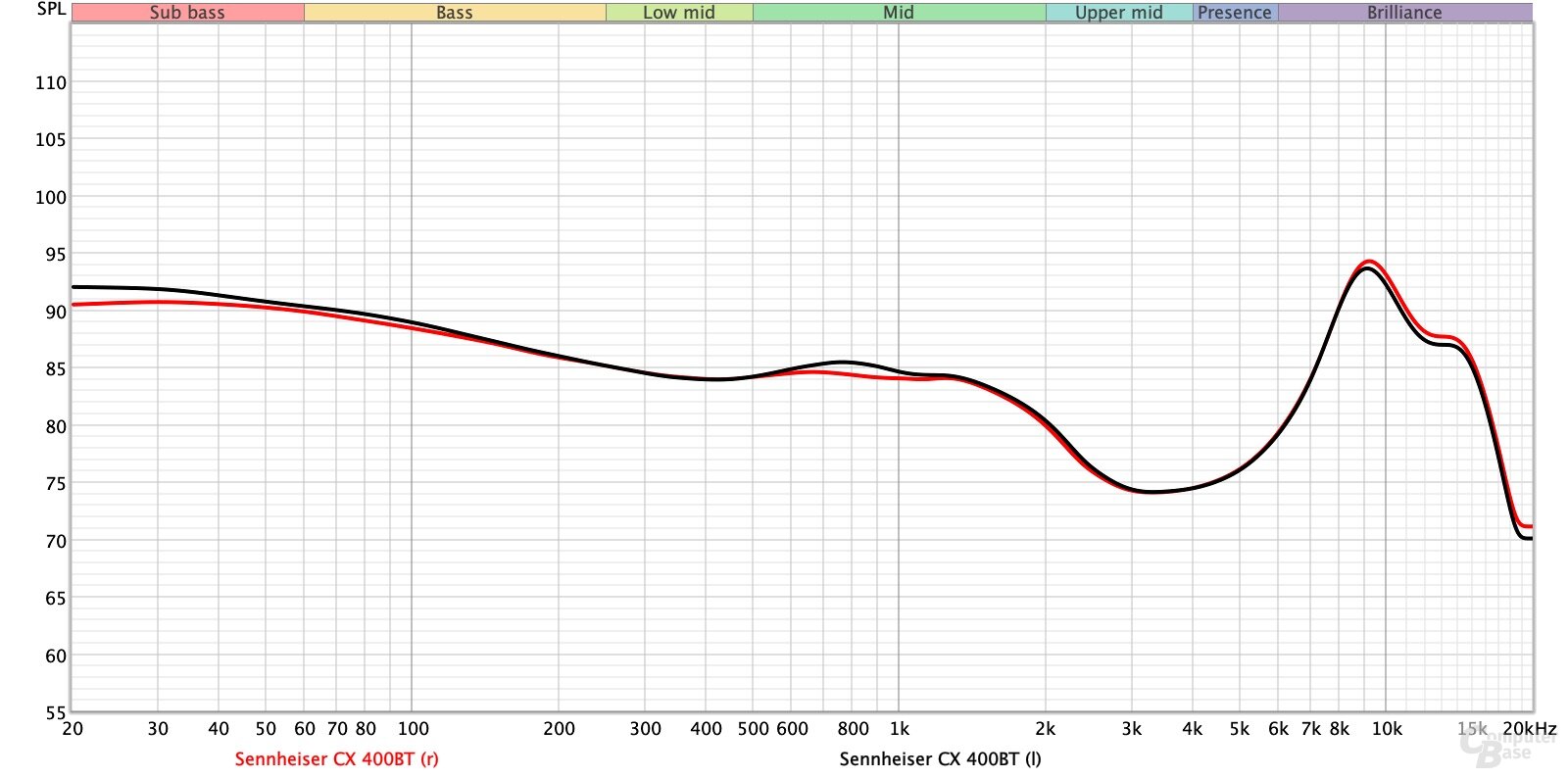 Frequency response: Sennheiser CX 400BT
Frequency response: Sennheiser CX 400BT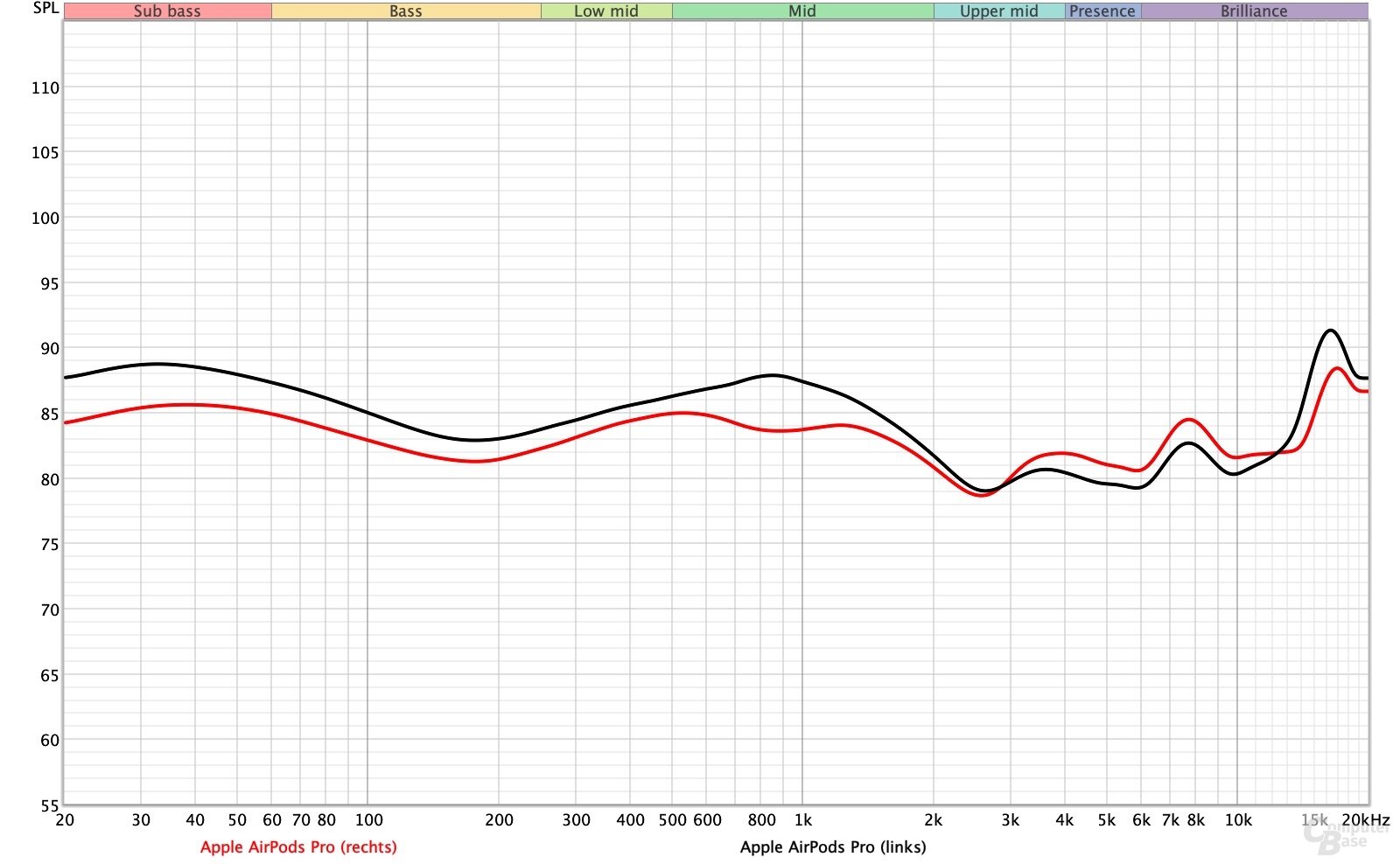 Frequency response: Apple AirPods Pro
Frequency response: Apple AirPods Pro Frequency Response: Marshall Mode II
Frequency Response: Marshall Mode IIThe frequency analysis of the Anker Soundcore Liberty 4 shows that they are not neutrally tuned in almost any area. The bass is a little less bulky in places than the Liberty 3 Pro, but they go a step further in the deep bass and treble and distort it even more. The small range of the tonally neutral mids cannot counteract this and the described sound losses occur.
ANC of the Liberty 4
The Liberty 4's ANC filters deep sounds well without disturbing you with a loud background noise even in quiet surroundings. The background noise is hardly perceptible and not disturbing with both adaptive and manual setting of the ANCs at the highest level. This shows once again that even ambient noises in particular are very effectively dampened, while sudden, unforeseen sound events are filtered out much better by models such as the Bose QuietComfort Earbuds II.
 Anker Soundcore Liberty 4
Anker Soundcore Liberty 4Typing on the keyboard or clicking the mouse remain as bright noises due to the strong attenuation of low frequencies and can therefore still be heard clearly when using ANC. Depending on the environment, it can be more pleasant to manually turn the ANC back to “Medium” to let more noise through, but to soften the strong focus on high frequencies.
The ANC of the Liberty 4 is also susceptible to wind due to the external microphones. Wind noise reduction mode brings some relief, but also reduces ANC performance at the same time.
Good transparency mode
With the Trabnsparenz mode, users can choose between two modes: full transparency and voice mode. While the first transmits all noises unhindered to the wearer's ear, the second primarily amplifies voices.
Overall, the transparency mode has a pleasant sound, as it does not block the environment in particular renders hard. However, if you use it without playing music or with podcasts, the audible background noise is a tad too loud.
Heavily filtered telephony
When it comes to telephony, the Soundcore Liberty 4 picks up where the Liberty 3 Pro left off. Ambient noise is heavily filtered, ensuring only the occasional bird chirp is transmitted while road noise is completely eliminated. This also leads to a somewhat tinny, distorted sound of the voice on the Liberty 4, which is, however, transmitted clearly and loudly.
< figure class="text-asset text-width"> Porsche Design PDT60 – microphone quality
Latency of the Liberty 4
With SBC, AAC and LDAC, the Soundcore Liberty 4 does not offer a codec that has a particularly low delay, so that the offset between picture and sound is reduced. The in-ear headphones also do not have a special gaming mode. This is why the typical misalignment between image and sound can be observed during video playback if the playback software does not compensate for it itself.
The sound, however, isn't entirely convincing. It emphasizes the bass and treble too much, which makes for an unpleasant sound in the treble. The mids, on the other hand, cannot counteract this concentrated boost and recede into the background too much. Anyone who buys the Liberty 4 should therefore use the equalizer or the HearID sound adjustment to ensure more balanced tones.
-
 Anker Soundcore Liberty 4
Anker Soundcore Liberty 4
Image 1 of 7
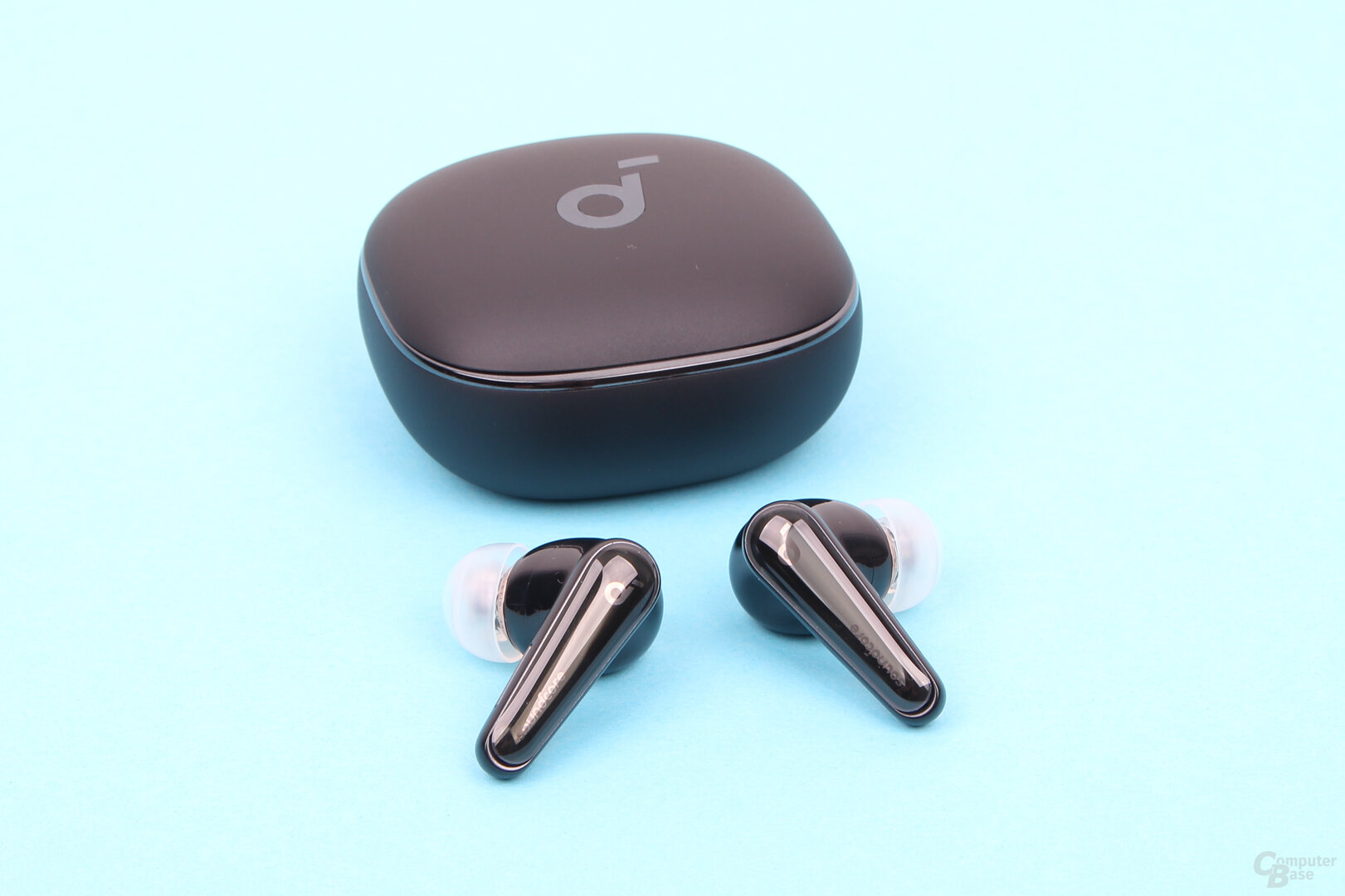 Anker Soundcore Liberty 4
Anker Soundcore Liberty 4 Anker Soundcore Liberty 4
Anker Soundcore Liberty 4 Anker Soundcore Liberty 4
Anker Soundcore Liberty 4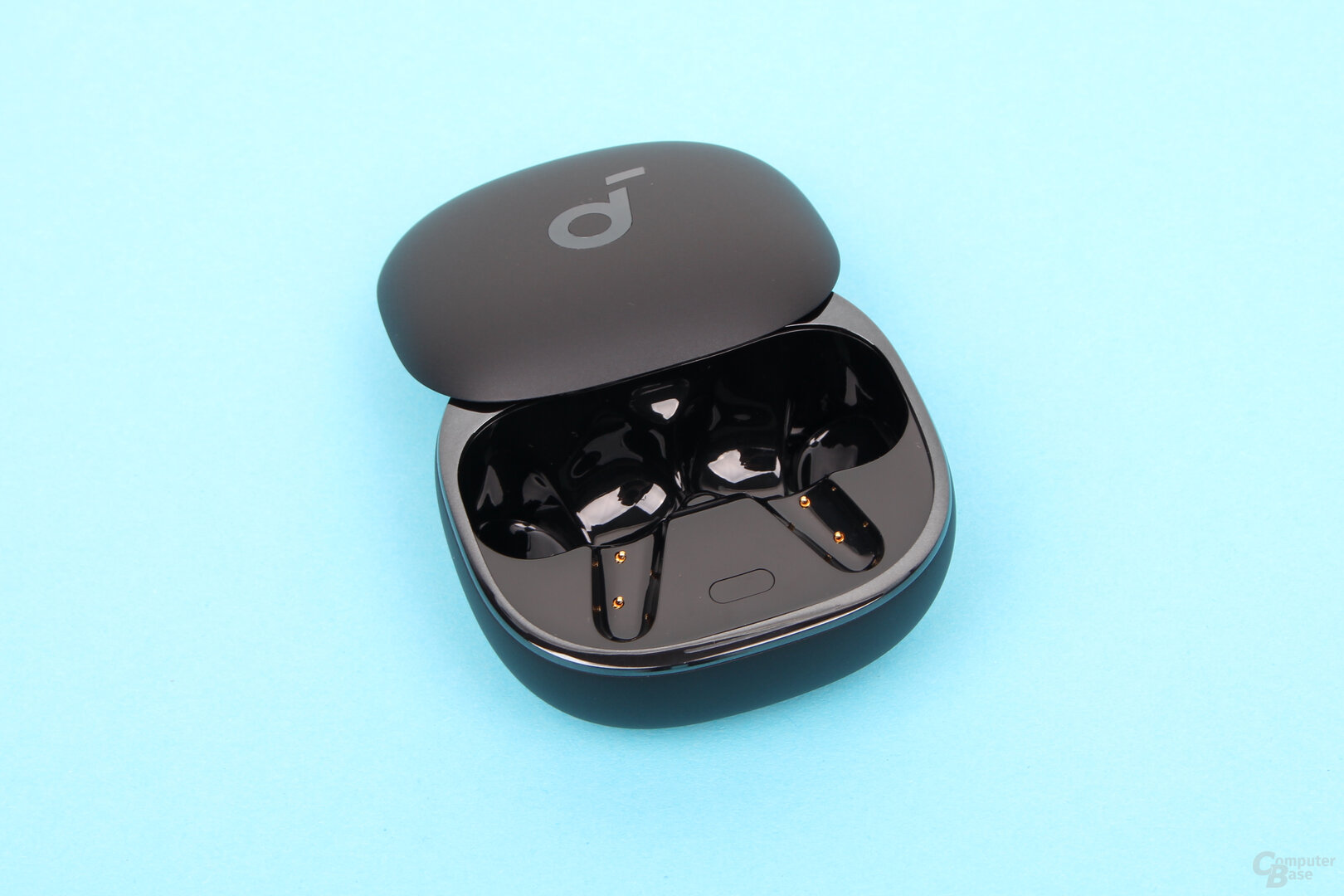 Soundcore Liberty 4: slide-on loading case
Soundcore Liberty 4: slide-on loading case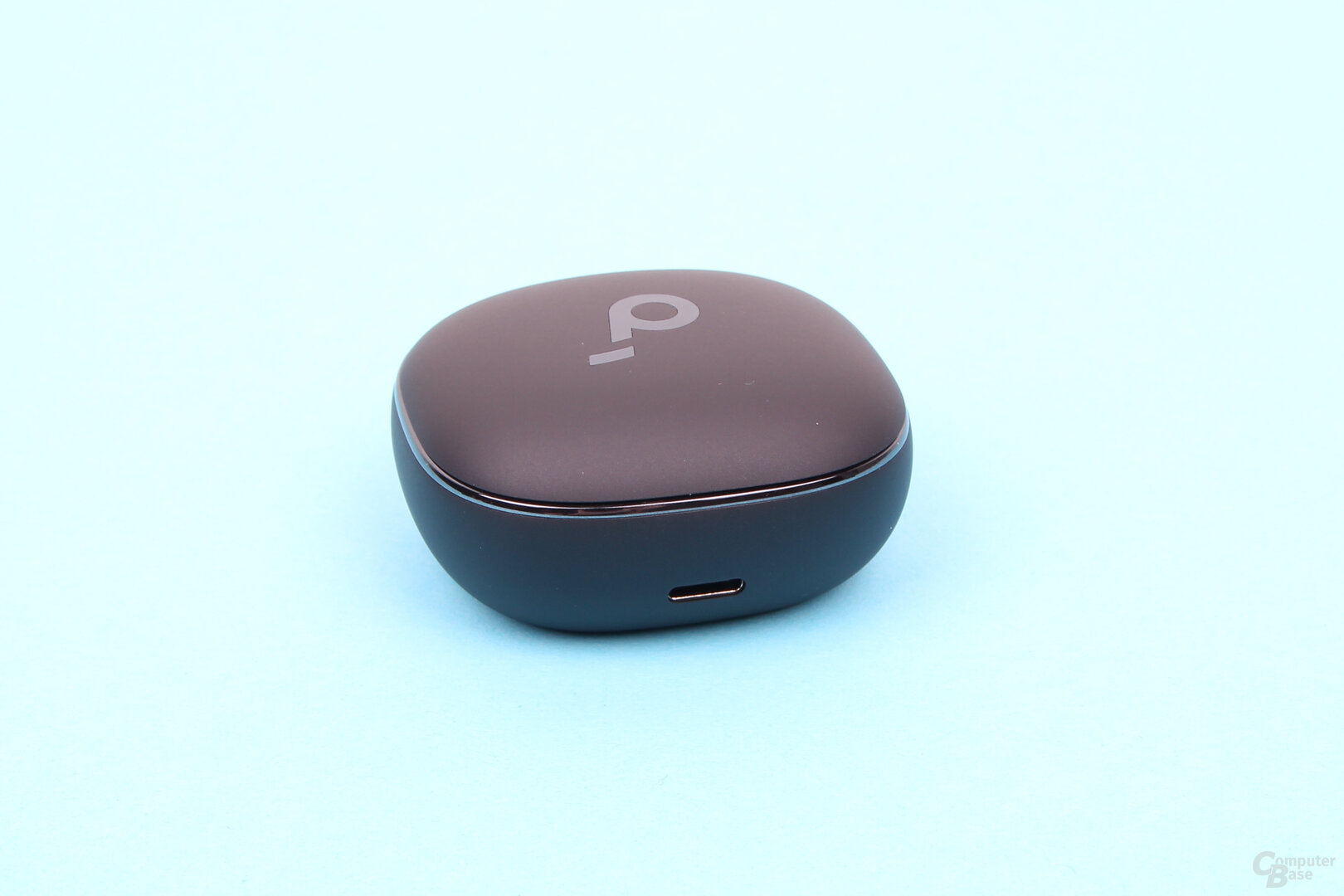 Anker Soundcore Liberty 4
Anker Soundcore Liberty 4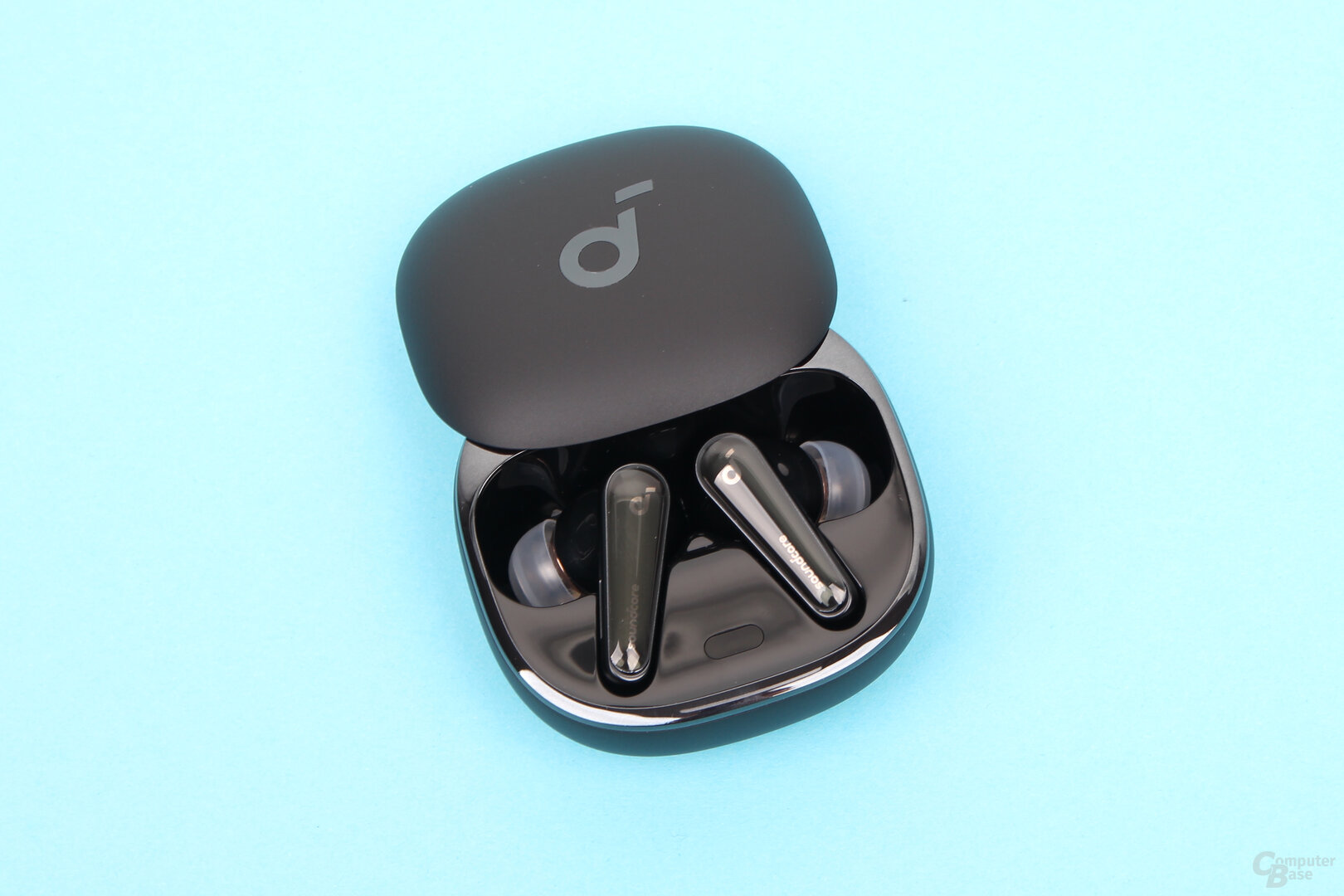 Anker Soundcore Liberty 4
Anker Soundcore Liberty 4The heart rate sensor of the Liberty 4 measures the heart rate directly in the wearer's ear without the need for additional technology elsewhere. The measurement is surprisingly accurate and is usually in the range of an Apple Watch 8. However, the measurement of the heart rate in the ear is not a real game changer, as it is carried out too selectively in the ear, namely only when the earphones are worn . The heart rate measurement of the Liberty 4 is therefore primarily a nice addition for all those who have not yet worn a smartwatch on their arm. If you always wear a smartwatch anyway, you don't need the function in the Liberty 4.
Features like wireless charging and auto-play/auto-pause are now standard on Anker models. With multipoint and LDAC, the Soundcore Liberty 4 also offer extras that not every more expensive competitor has, but are no longer a unique selling point in this price range. The Huawei FreeBuds 5i (test) bring both for less than 100 euros. The Liberty 4 also does not have a low latency mode for games.
-
 Anker Soundcore Liberty 4
Anker Soundcore Liberty 4
Image 1 of 7
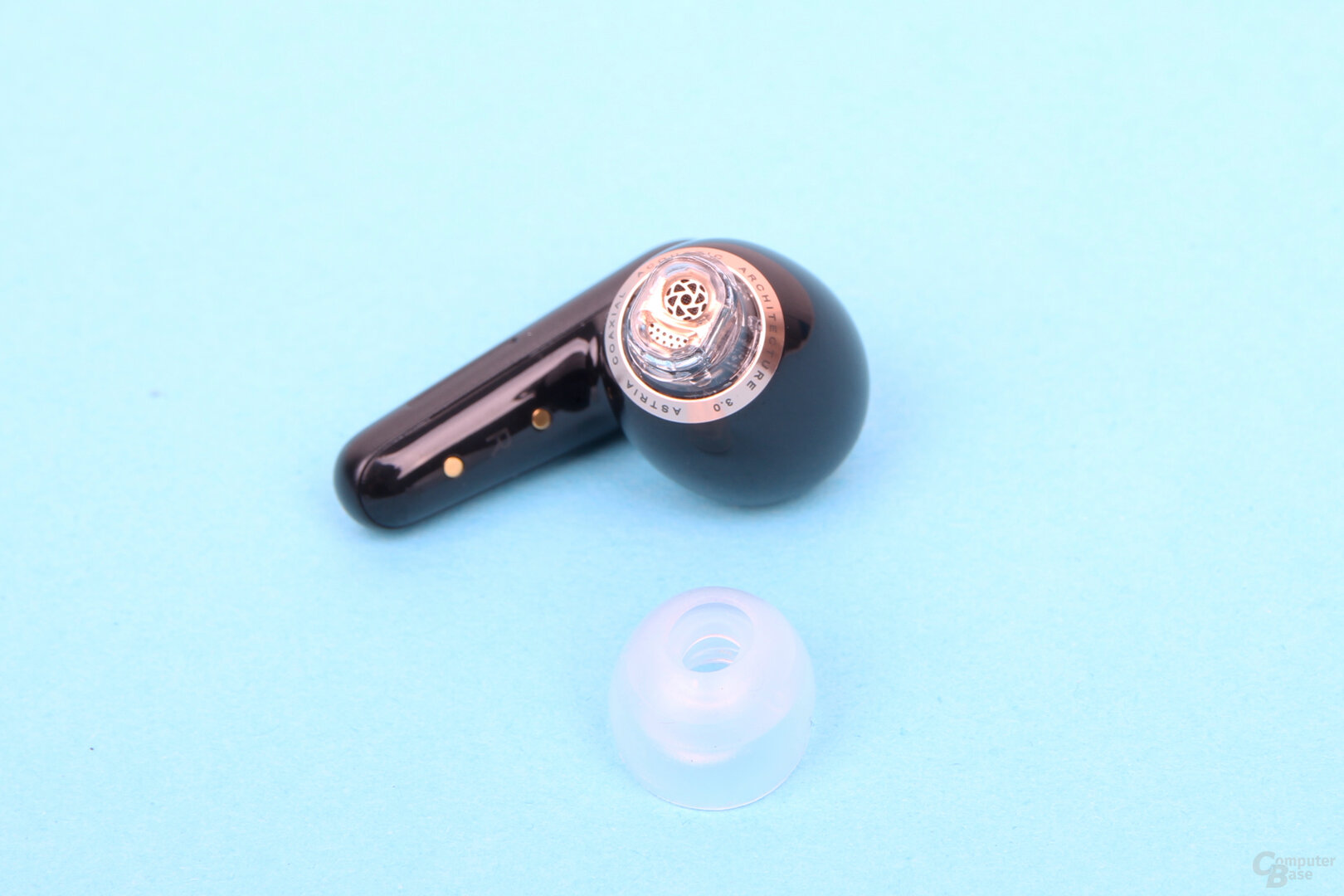 Anker Soundcore Liberty 4
Anker Soundcore Liberty 4 Anker Soundcore Liberty 4
Anker Soundcore Liberty 4
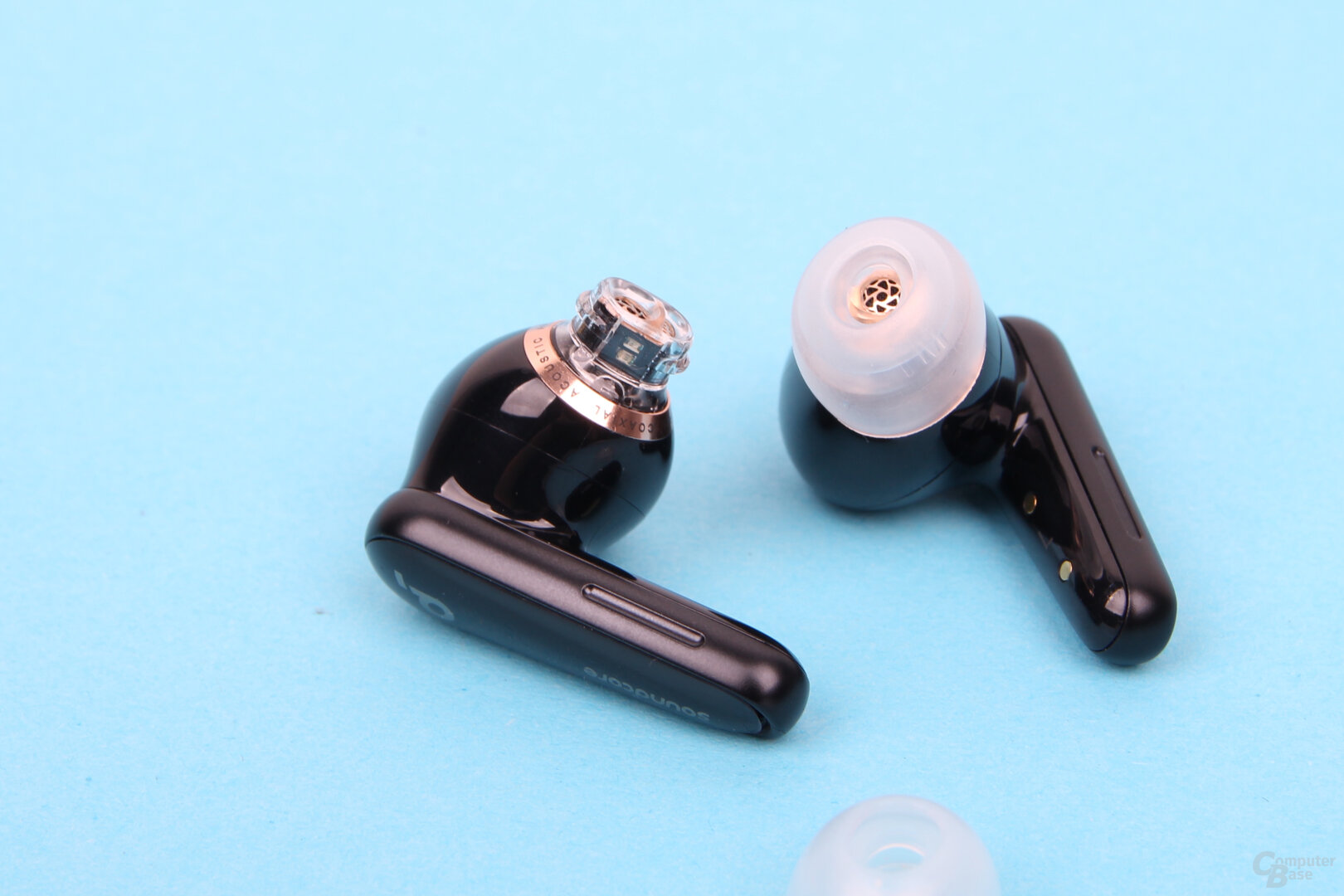 Heart rate sensor in the right earphone of the Soundcore Liberty 4
Heart rate sensor in the right earphone of the Soundcore Liberty 4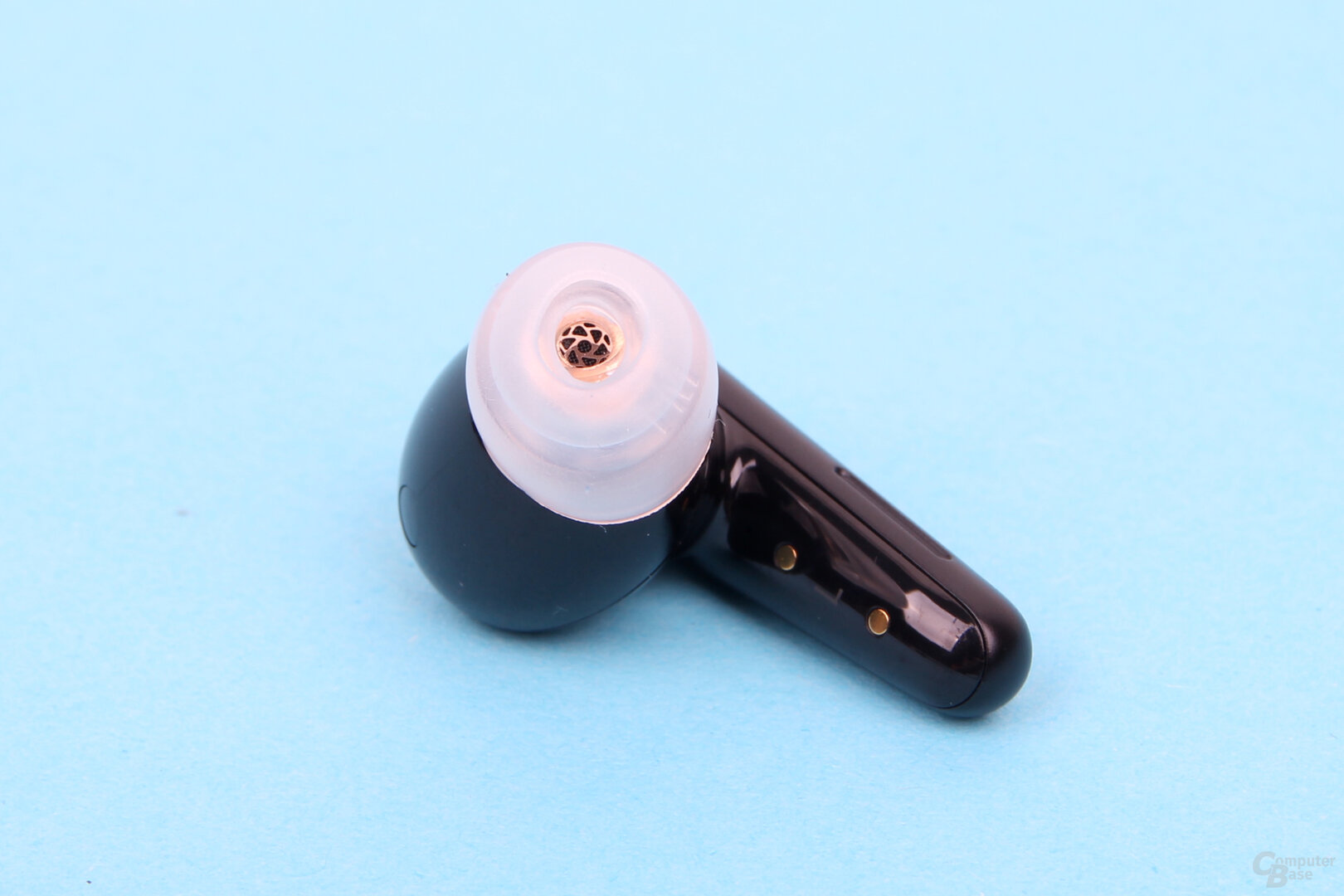 Anker Soundcore Liberty 4
Anker Soundcore Liberty 4The ANC of the Soundcore Liberty 4 suppresses deep ambient noise very effectively and also offers good customization options via the app in this regard. However, they cannot compete with the ANC champions in the form of the Bose QuietComfort EarBuds II (test).
When telephoning, the Liberty 4 switch off the environment just as effectively , but the voice of the wearer is distorted too much to still sound good.
Anker Soundcore Liberty 4 Product group in-ear headphones, 03/14/2023
- Heart rate sensor< /li>
- Good sound
- LDAC support
- Good battery life
- Transparency Mode
- Auto-Play and Auto-Pause
- Multipoint
- Wireless Charging
- Fast Charge
- Single Use
- Customizable operation
- Sound personalization via app
- Very good app
- Audible noise on transparency
- Susceptible to wind
- Voice a bit unnatural on the phone
ComputerBase has the Soundcore Liberty 4 Received on loan from Anker for testing. The manufacturer did not influence the test report and there was no obligation to publish it. There was no NDA.
(*) Links marked with an asterisk are affiliate links. In the case of an order via such a link, ComputerBase participates in the sales revenue without increasing the price for the customer.
This article was interesting, helpful or both? The editors are happy about any support from ComputerBase Pro and disabled ad blockers. More about ads on ComputerBase.

